Introduction
This is an abridged description of a trip to Cambodia in November 2001. The intention is to give a firsthand personal experience of how we, Brigitte and I, did get to and through the country.
Despite the fact that we did not book anything in advance at all (except for the flight to Bangkok, our first destination) and that we covered around 750km within the country during the 14 days, it was no problem getting any means of transport or accommodation on the same day. I only did some kind of pre-planning in so far that we wanted to be back in Bangkok a couple of days before our flight back to Germany.
At the time of writing all this, almost 20 years have passed. What I had seen and experienced, may not be the way today anymore, though cultures and customs however does not change much.
Also after those many years the slides have suffered a little too. And the digitizer was also not able to improve the photos very much. I know that I will not win any prize with them but at least it will give you an impression of what we have seen. Following is a map of Cambodia with our itinerary marked with a yellow paint brush.
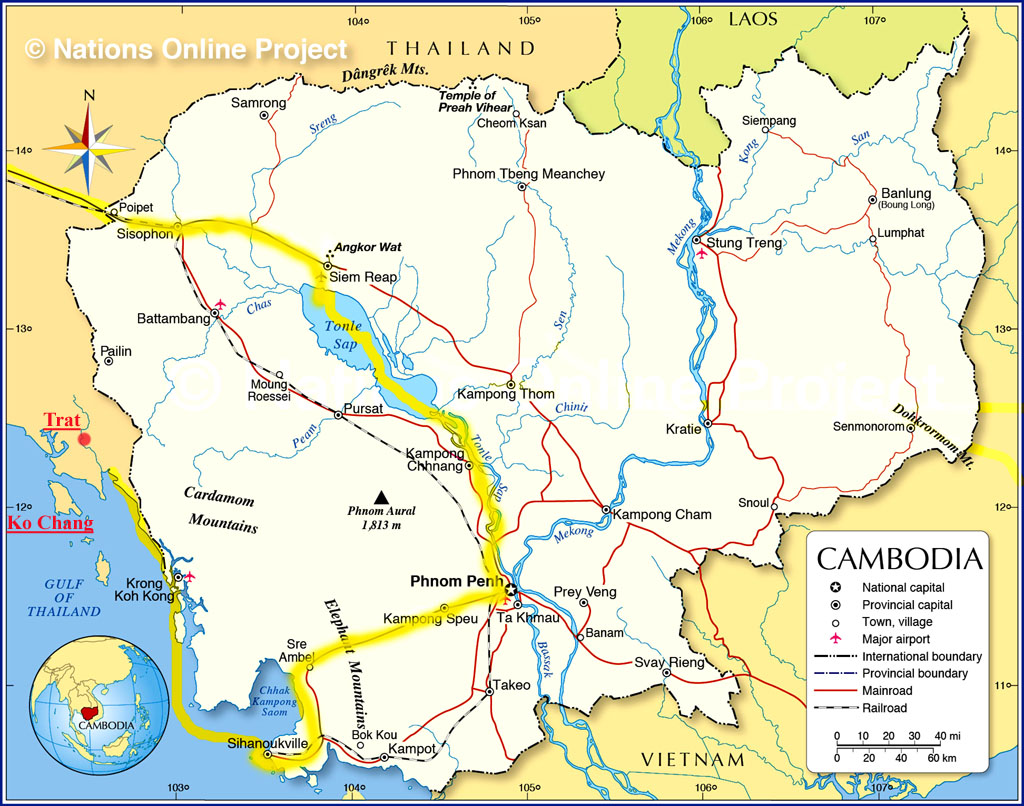
Getting from Germany to Cambodia
We had a round trip ticket to Bangkok. I do not know the price for the flight anymore. Take a look at the previous travel report of Thailand. From Bangkok it was easy to take a direct bus to the border town Aranya Prathet, where we stayed overnight. Next day we took a songthaew for the 4km to the Cambodian border. At the immigration post at Poipet we did get the Visa in our passport stamped and paid 20.00 USD each. From there we took a taxi to Siem Reap, the town to set off to Angkor Wat. But we did get stuck on the road because of a truck which did get stuck in the mud.
Click the small picture to get it enlarged
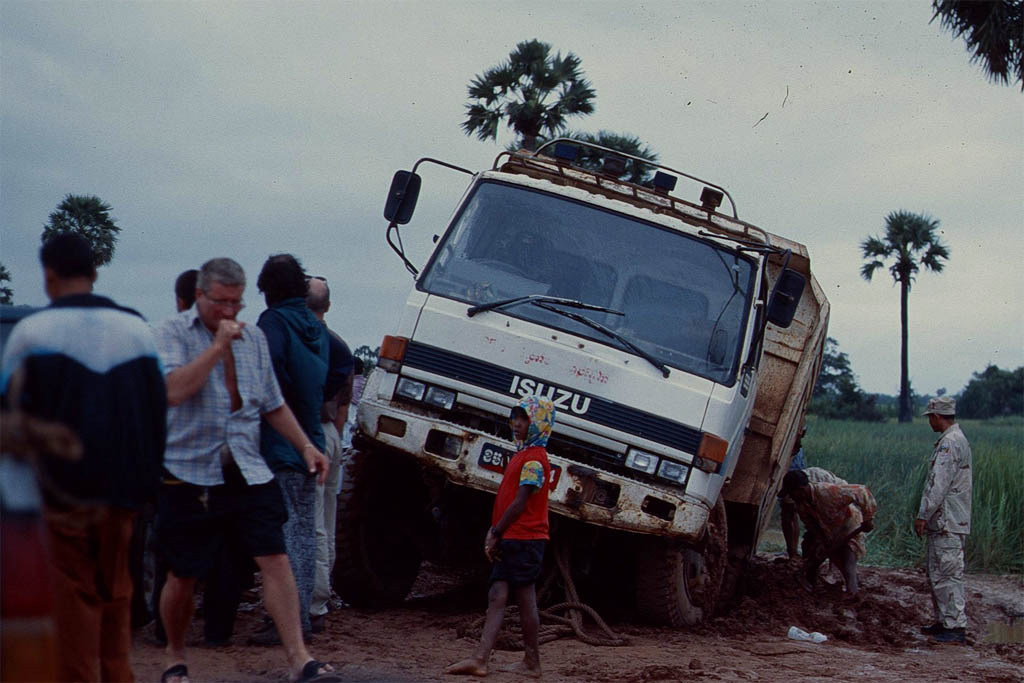
| Stop after the border
|
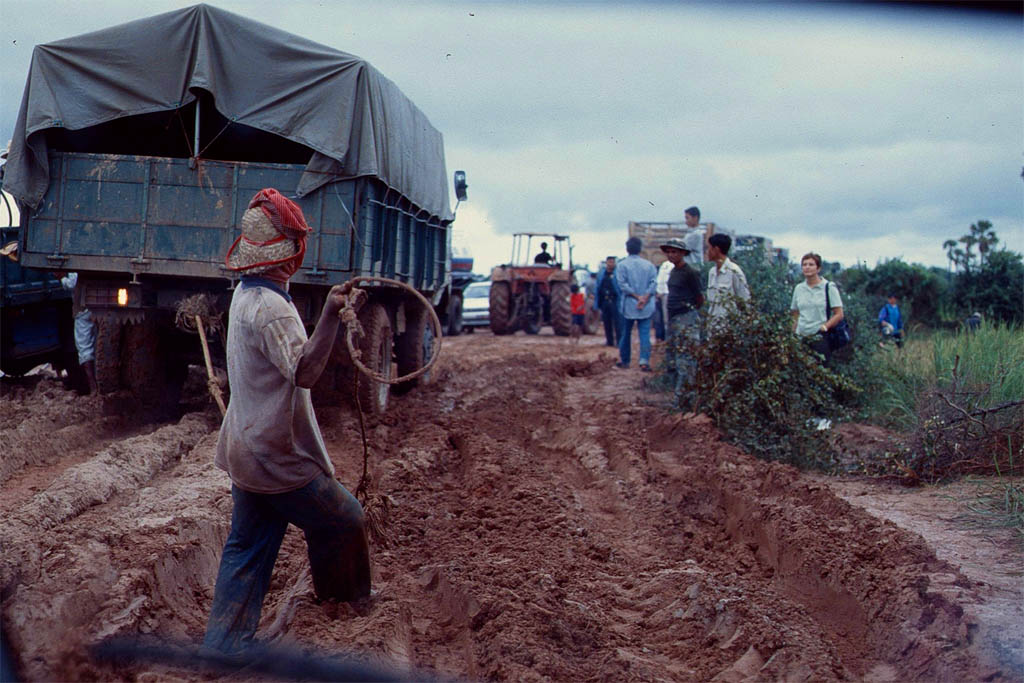
| because of a stuck truck
|
Siem Reap
We stayed 3 nights in a beautiful guest house with a nice restaurant on a long balcony. There we booked 2 motorbikes with drivers to roam around Angkor for 2 full days. The visitor fee was 40.00 USD each for 3 days. The drivers, two students, did cost much less than that. Because they could speak only a little English and thus they could not explain much.
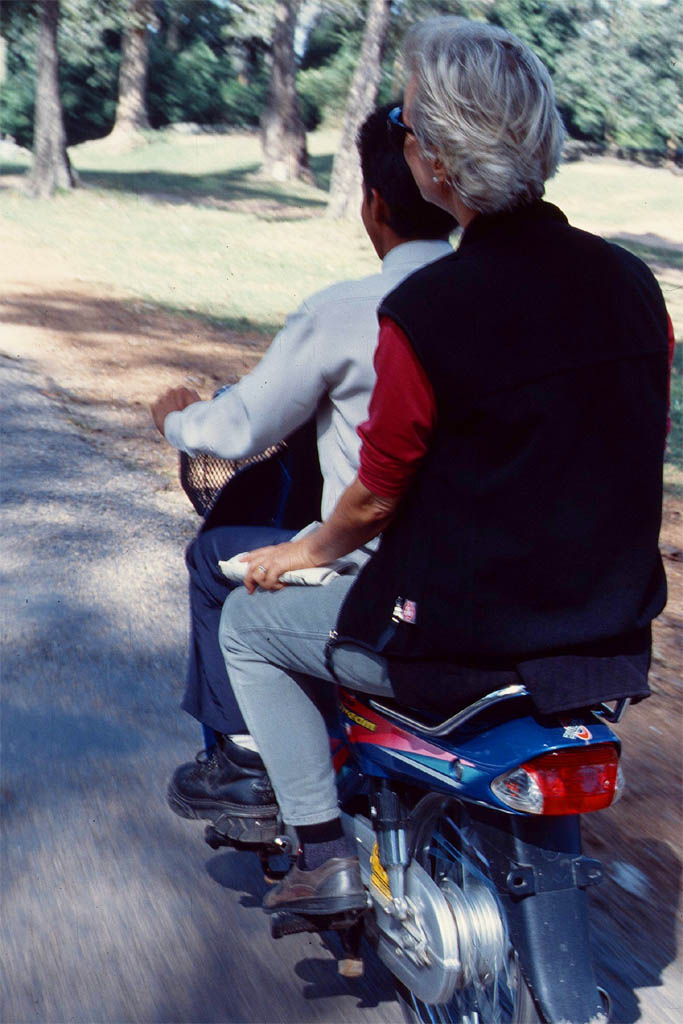
| Going around on a backseat motor bike
|
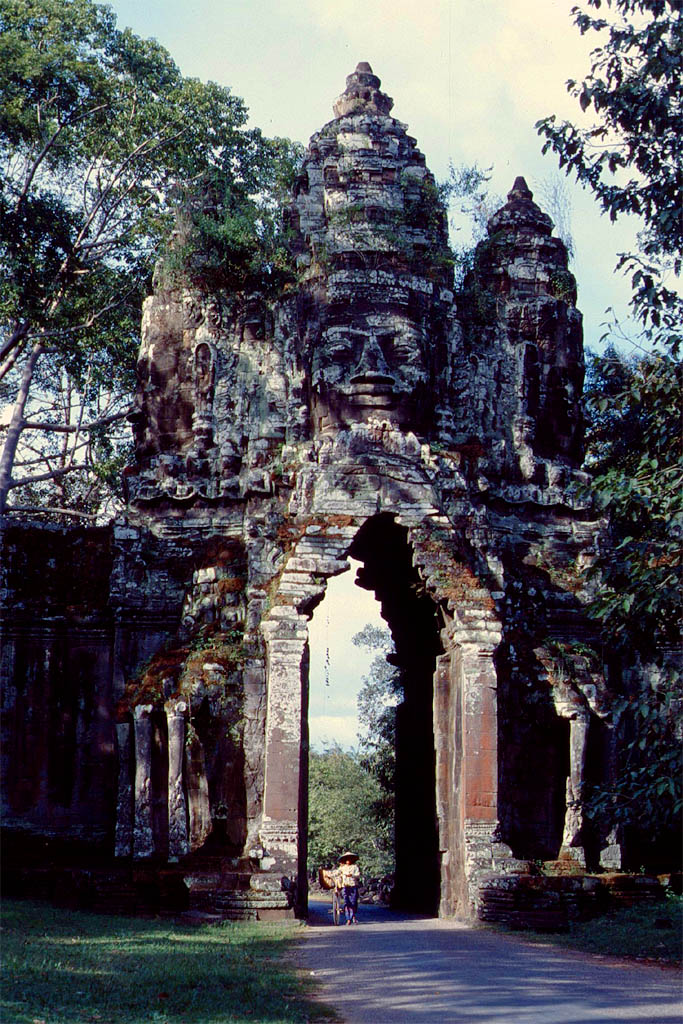
| Driving on paved roads
|
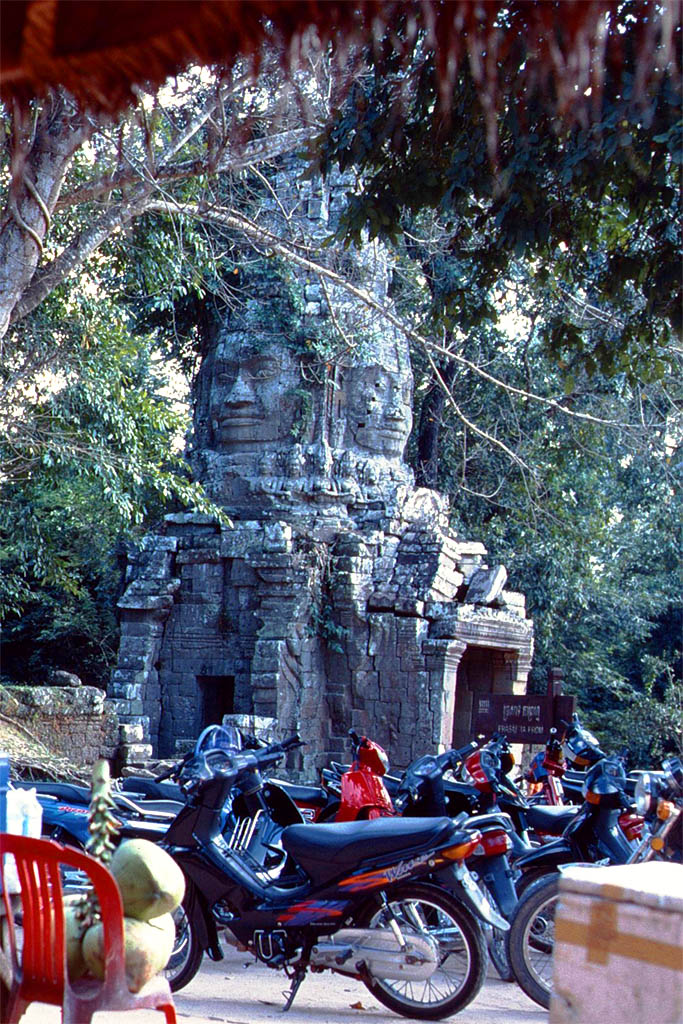
| Parking the bike
|
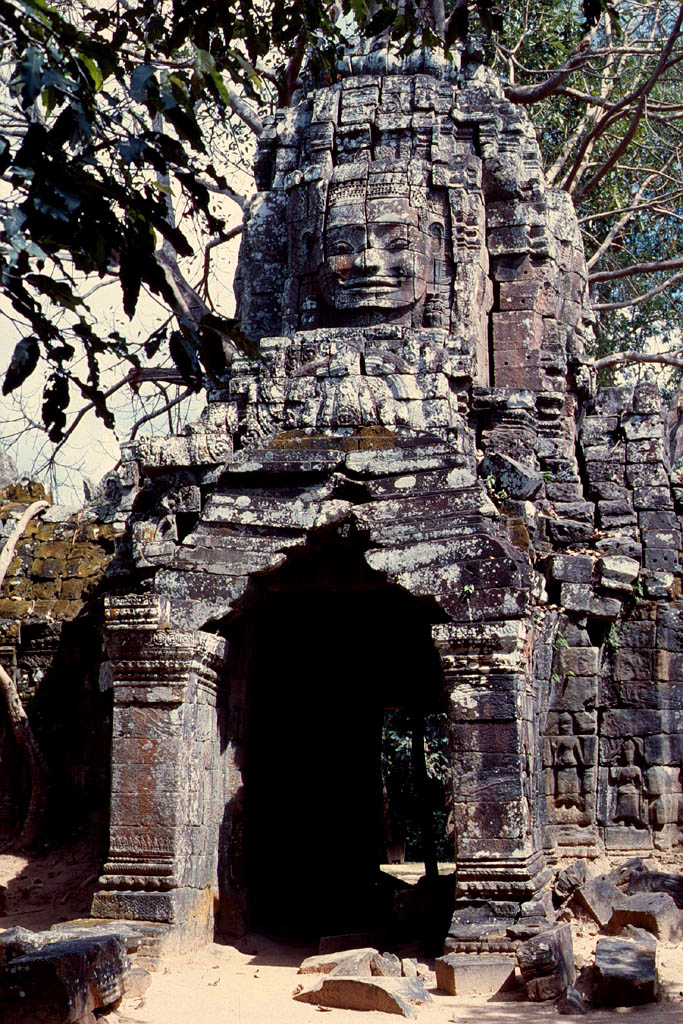
| and then walk around
|
Most of the time the drivers just brought us close to the most important sights, where they parked and just let us walk around. The first temple was Angkor Wat, the most famous one. There are an estimated 100 temples more all scattered around in an area of several square miles.
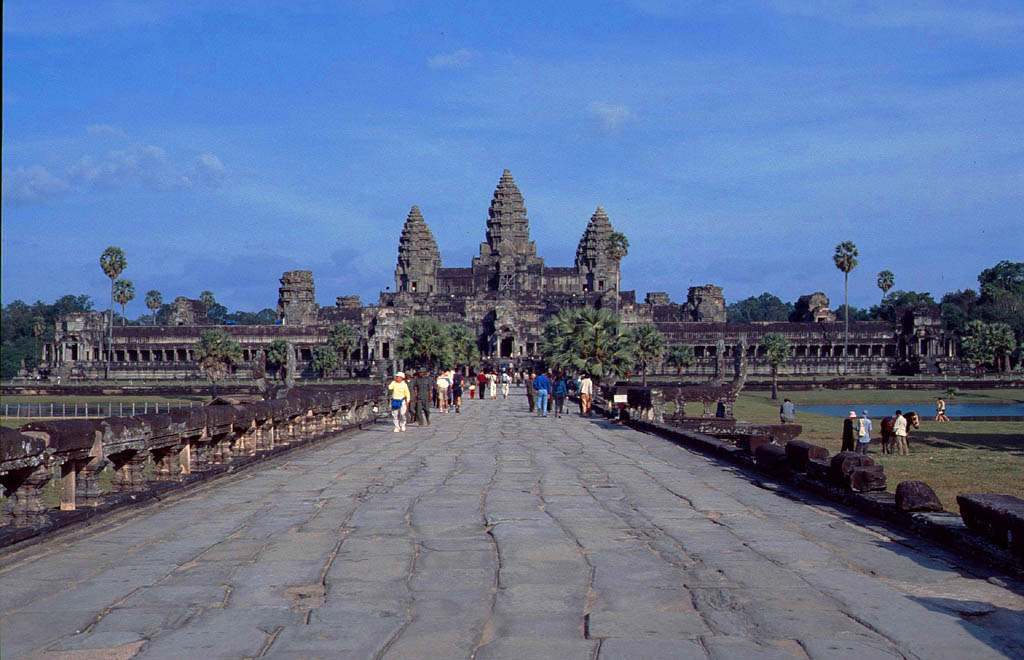
| Angkor Wat Temple
|
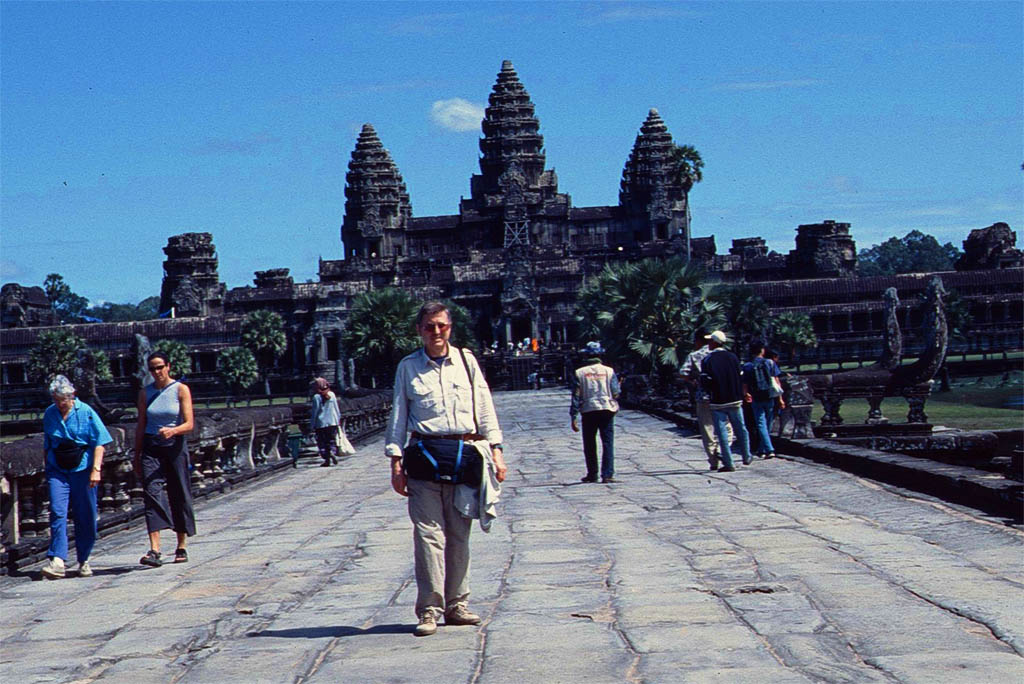
| Take a closer look
|
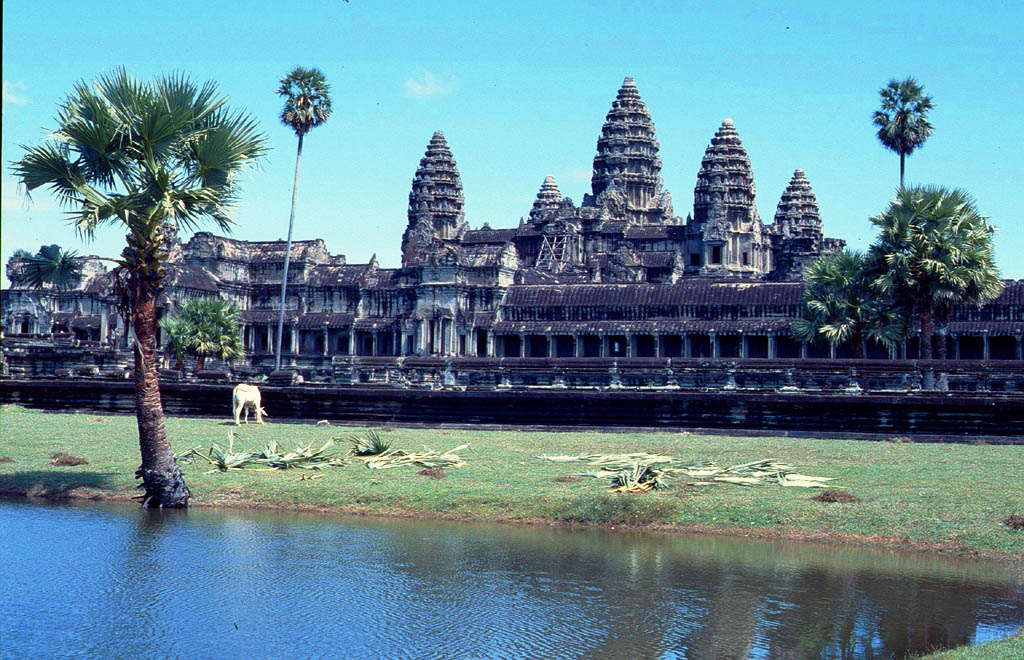
| Angkor Wat side view
|
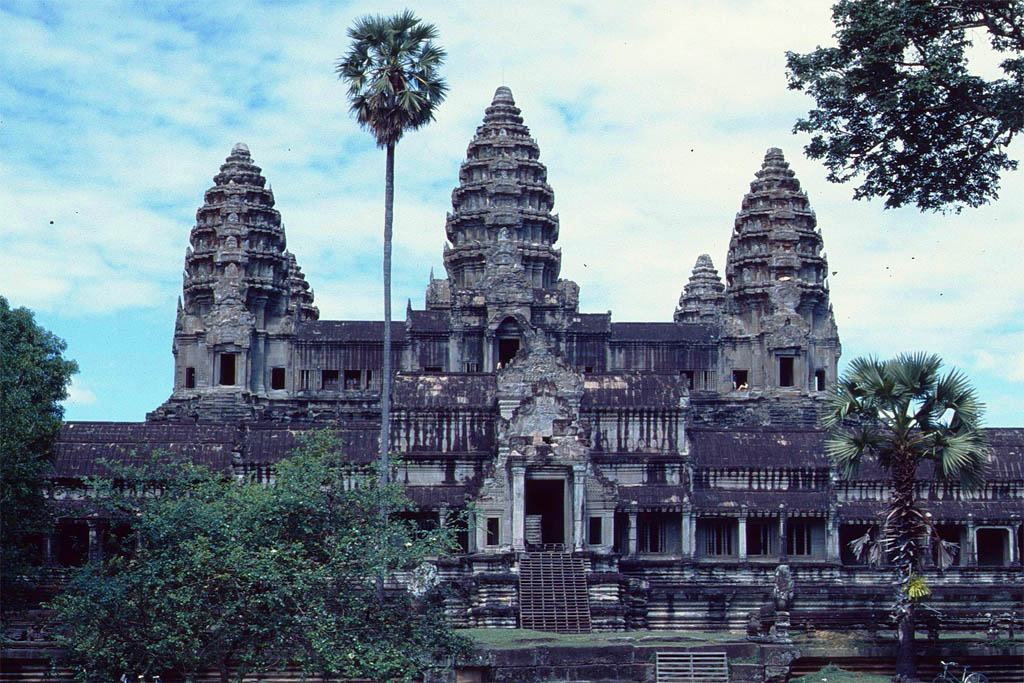
| Angkor Wat with a side entrance
|
All the temples were built during the reign of the Khmer from the year 802 to 1432 A.D. There are many factors why the Khmer Empire slowly declined and Angkor was finally abandoned. Maybe a drought period resulting in reduced water marks of the irrigation system and thus less crops to feed the growing population and thus a weakened army overrun by neighbors from Vietnam and Thailand. The last blow came when the Thai sacked Angkor in 1431 and the last Khmer moved to Phnom Penh. However, from that time to the present a small part of Angkor was, with some interruption, dwelled by Buddhist monks. Though no maintenance was done, so most of the temples became overgrown with weeds, bushes and trees.
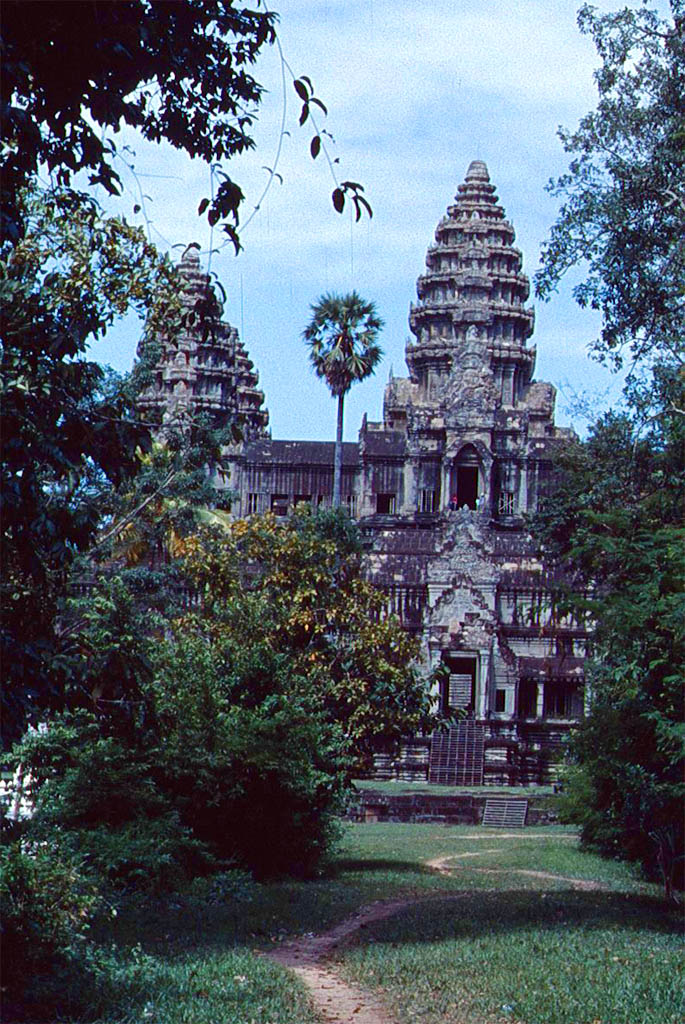
| What a beautiful sight
|
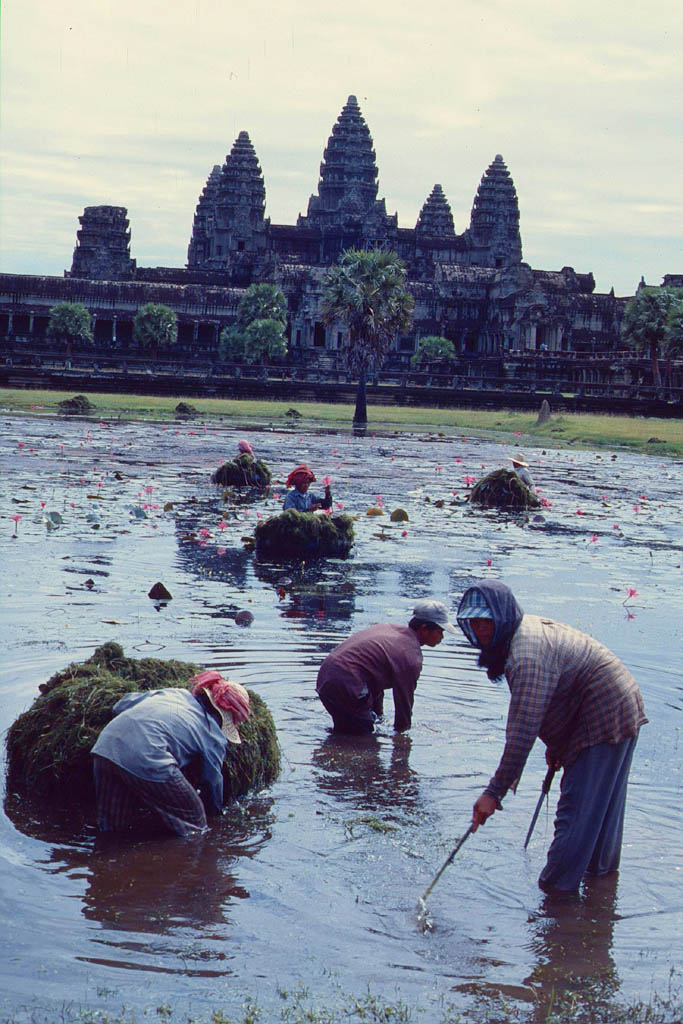
| What do the women seek?
|
Angkor was mentioned by some Portuguese who stumbled in the 16th century over some ruins. But only some Frenchmen really rediscovered Angkor and subsequently it became known to the world. Many French expeditions and restorations took place up to 1960 when it was only interrupted by the Khmer Rouge victory which started the civil war. Now Angkor is under the jurisdiction of the UNESCO. International, including German, and local efforts continue to preserve and reconstruct the monuments.
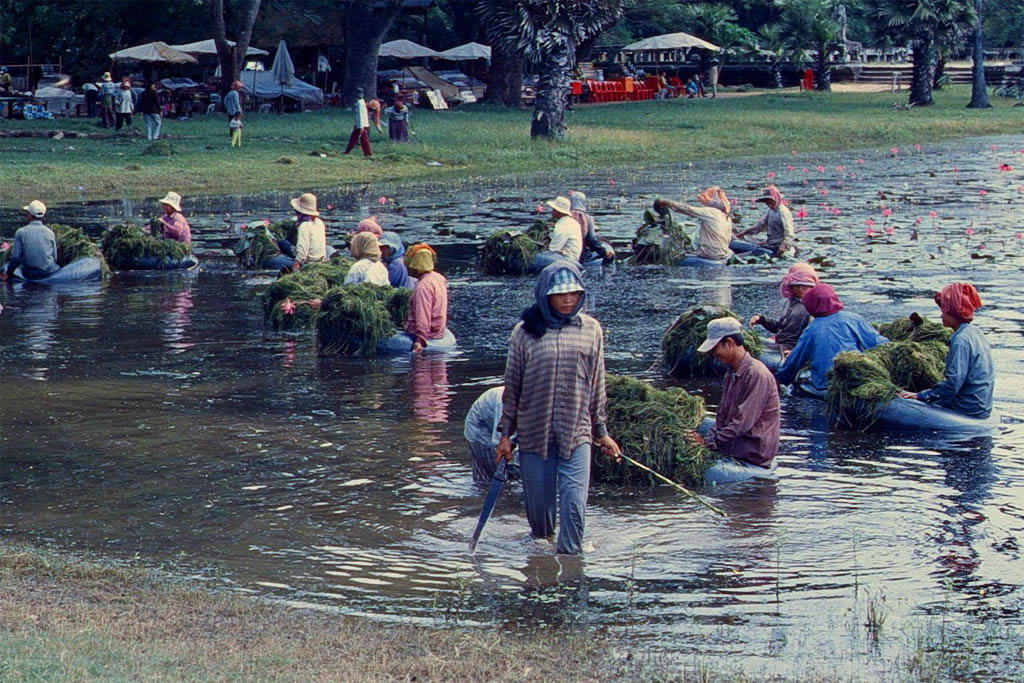
| The lake is being weeded
|
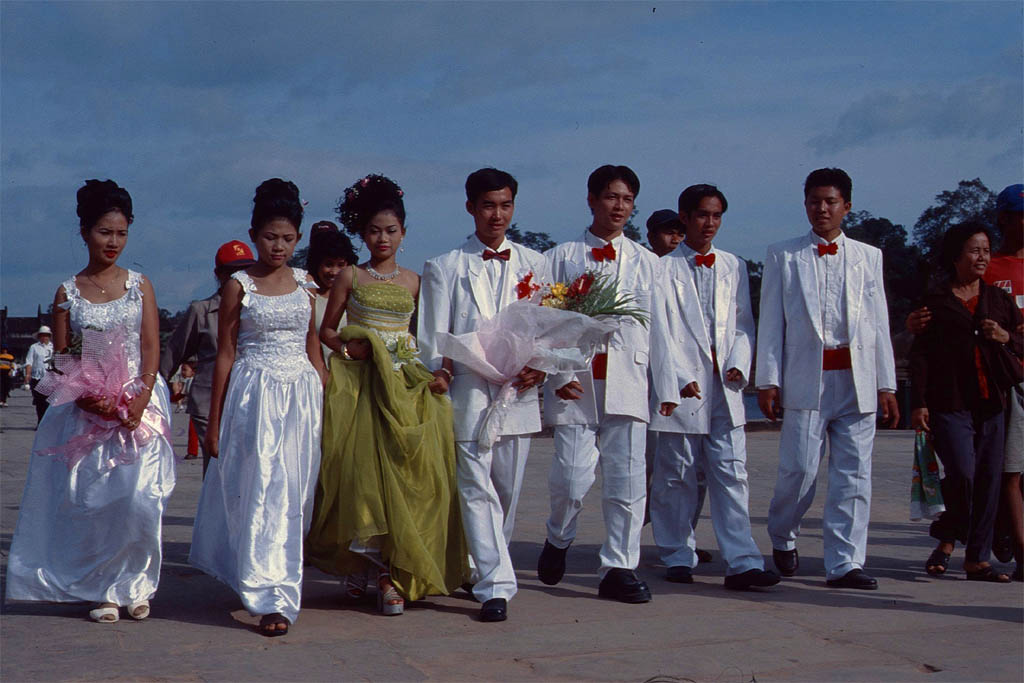
| A couple is being wedded
|
The Cambodians are very happy about their heritage now. The tourists are coming in droves and generating good income for the locals. But before they were not interested at all. If there would not have been Europeans with the curiosity, the urge to explore or the thirst for knowledge, Angkor would have been completely vanished by now. The same is also valid for most other archeological sites in the world.
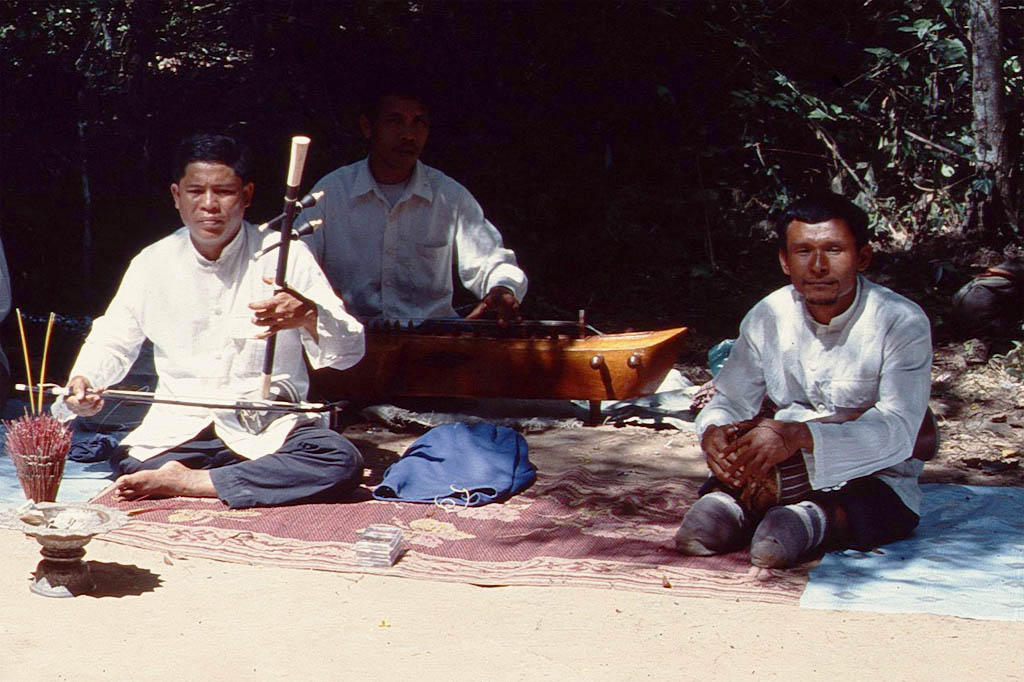
| A band is playing
|
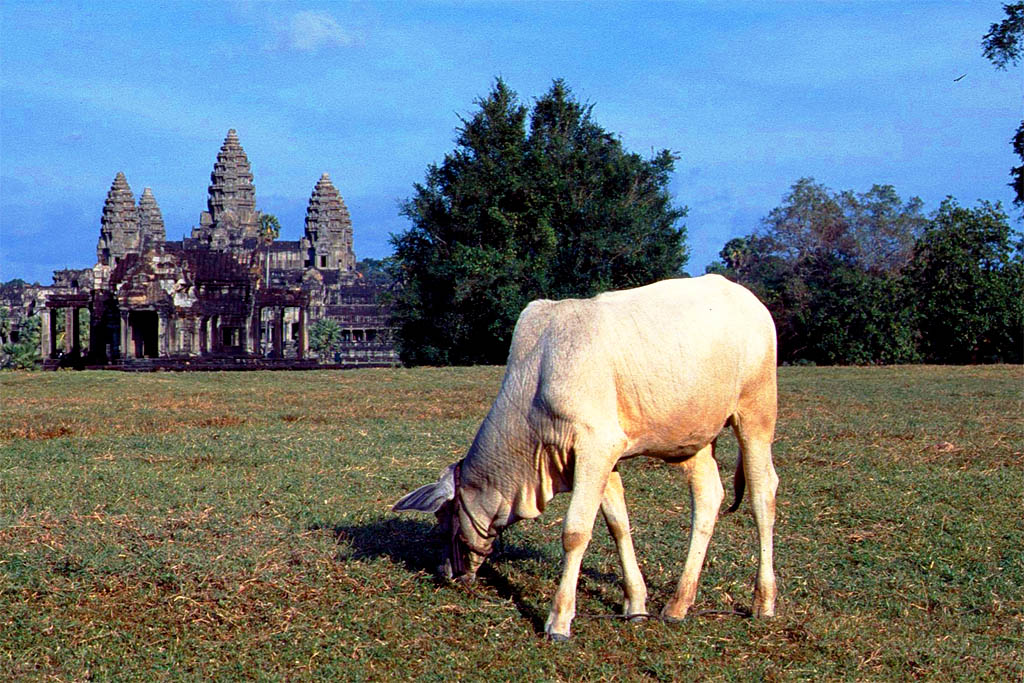
| A cow is grazing
|
I try to explain the following photos as much as I remember it. But mostly I will just group them together because the sequence of shooting them did get mixed up. If you look up the internet or guide books you may be able to match some photos and read the descriptions. I will be still trying.
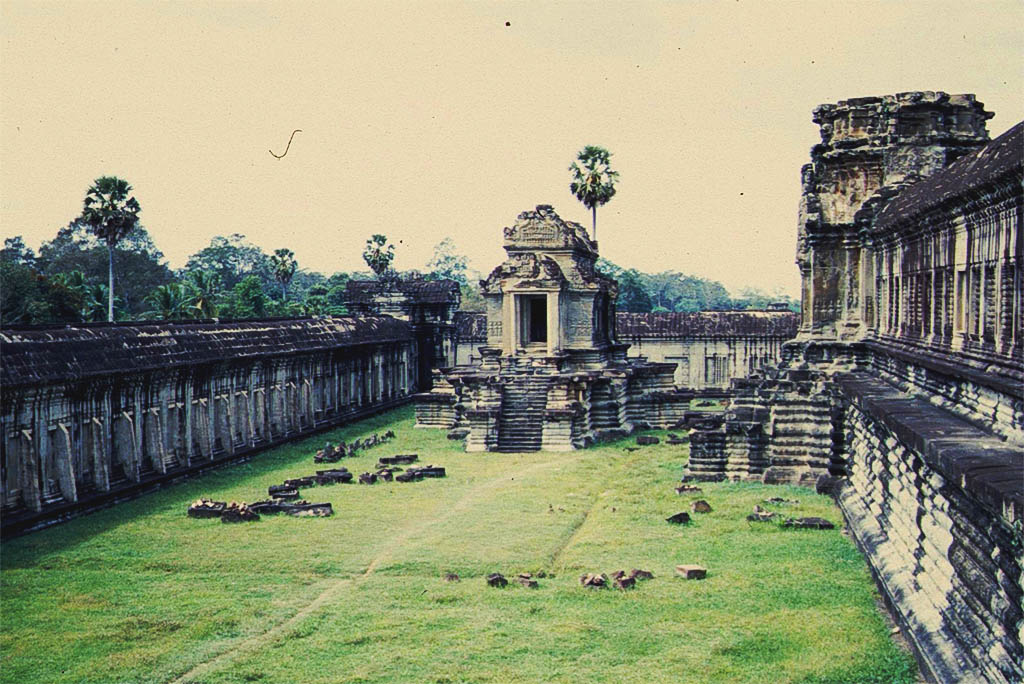
| This looks like a sports arena
|
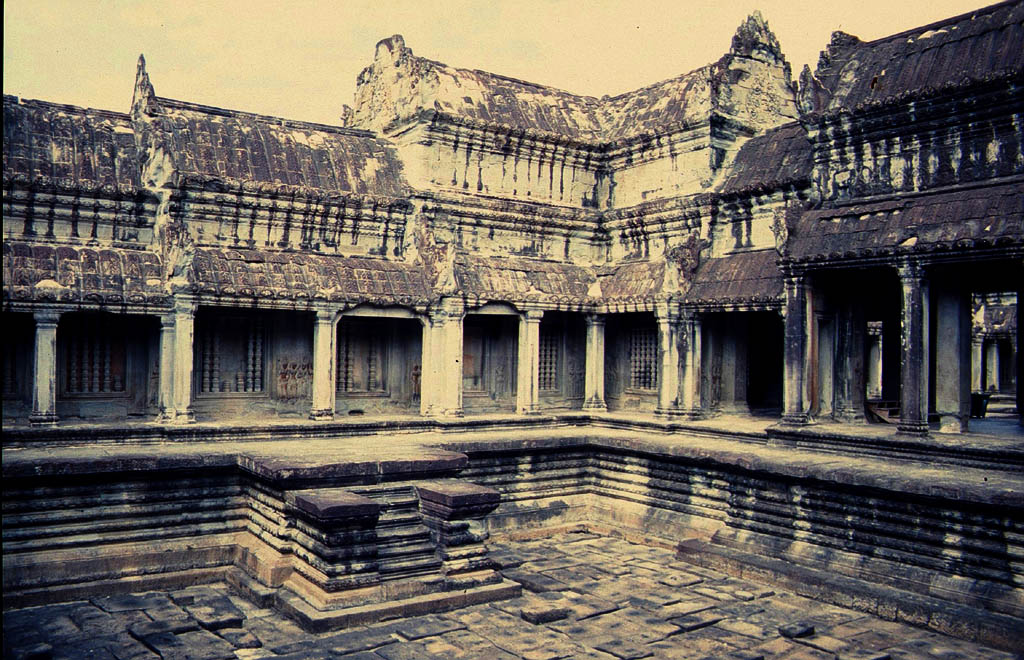
| And this like an empty swimming pool
|
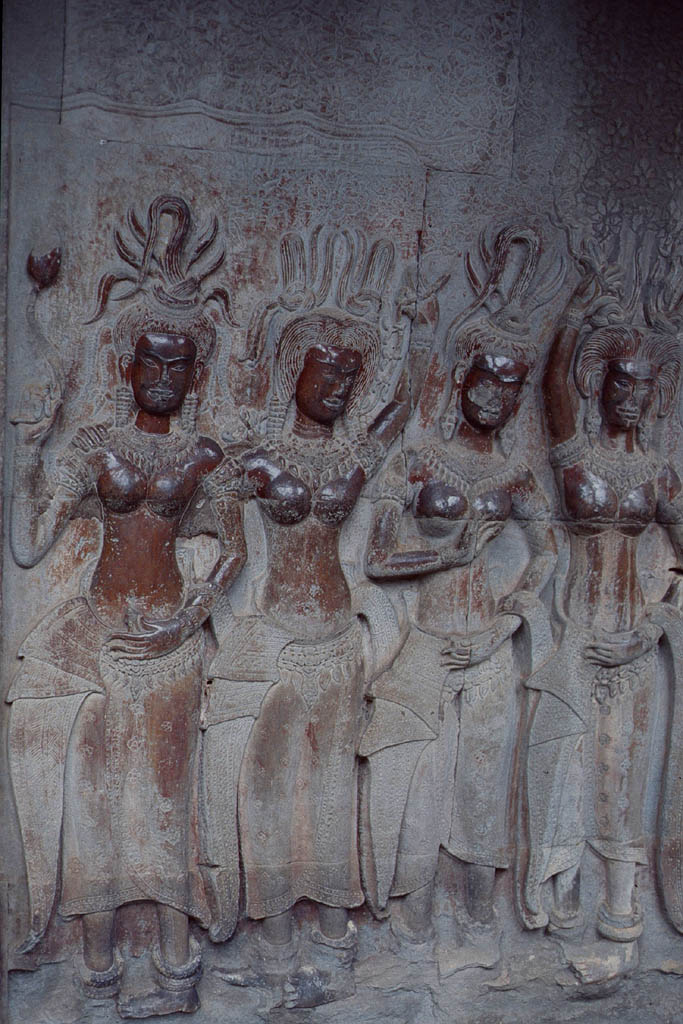
| They look like Apsara dancers
|
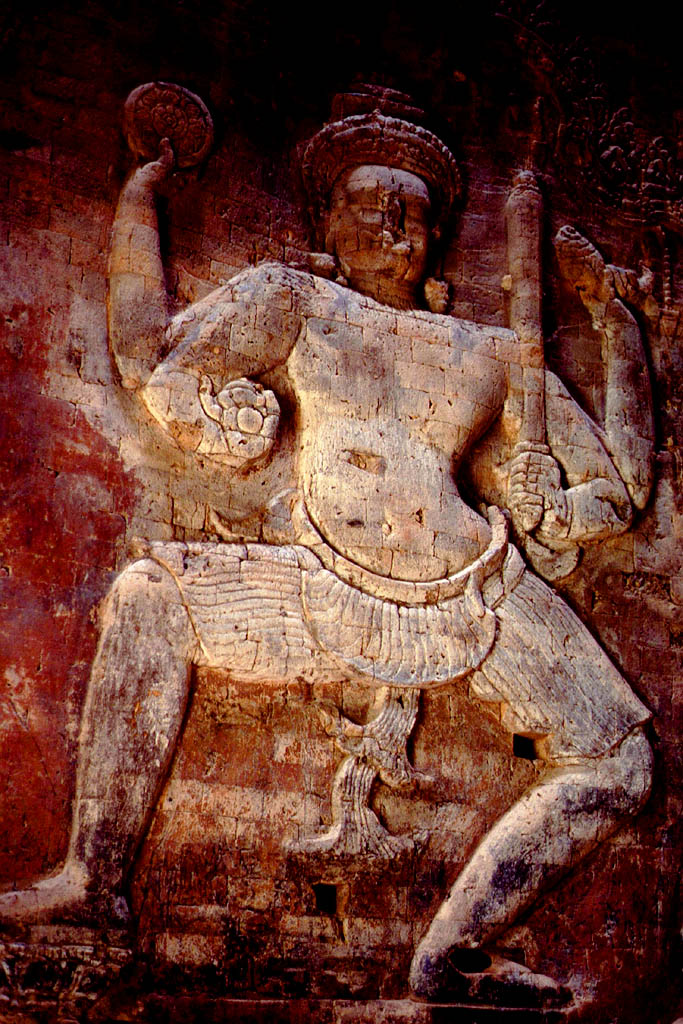
| And this one like a court fool
|
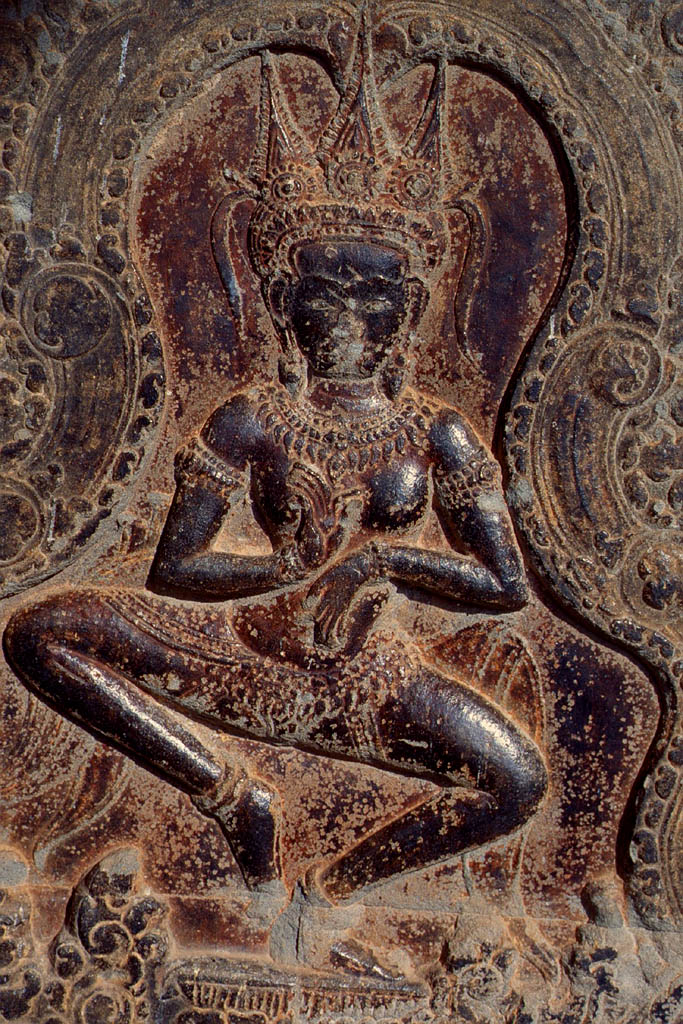
| She looks like a princess
|
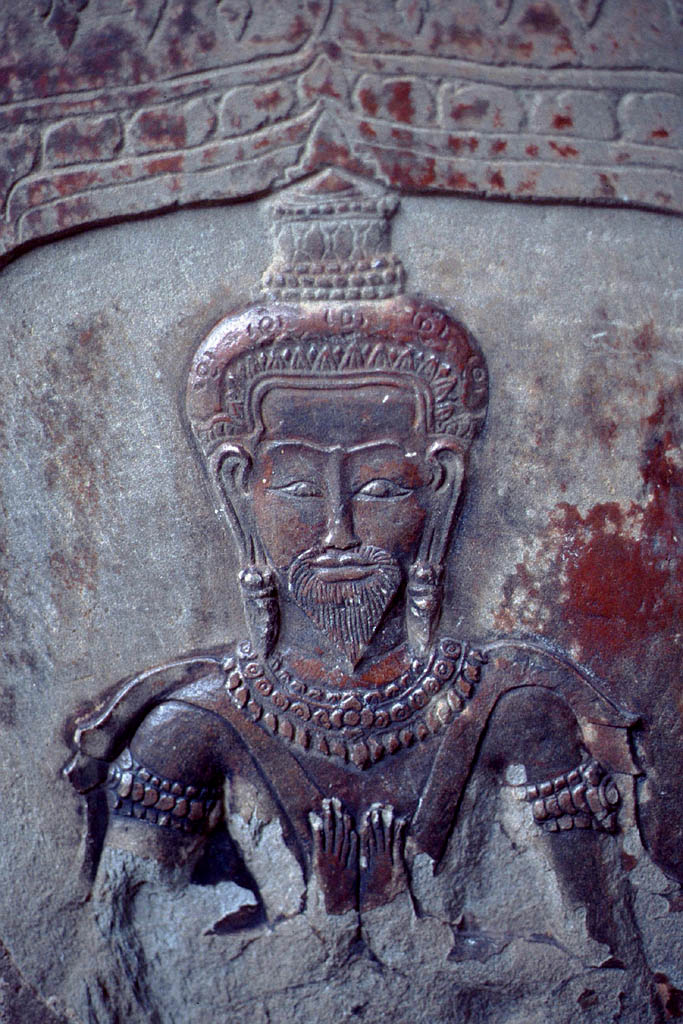
| He looks like a king
|
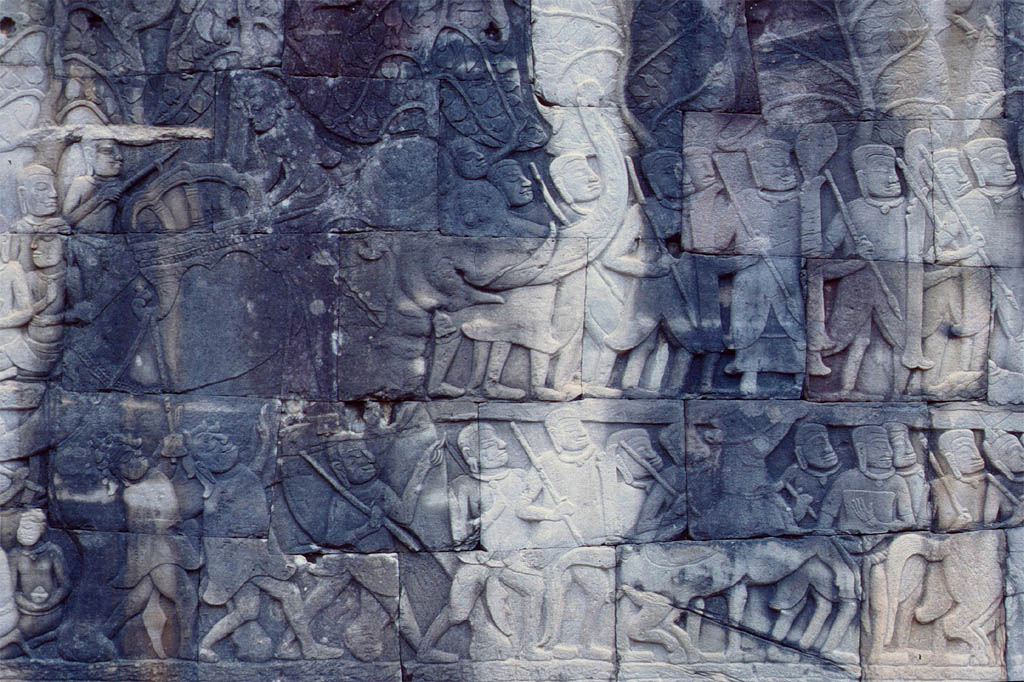
| How was life then in the old times
|
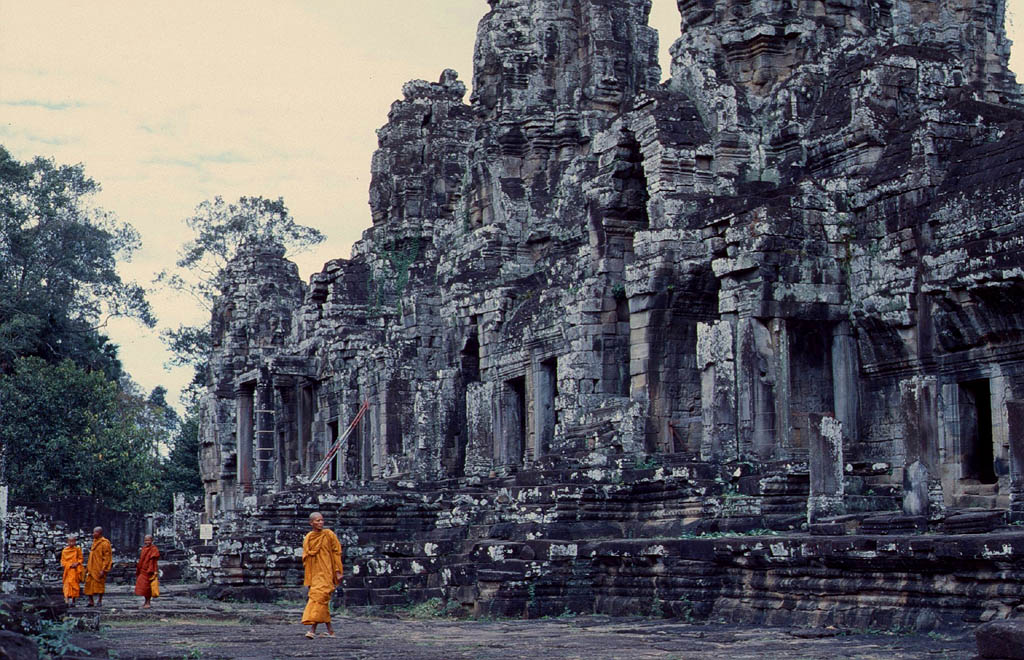
| No stories were passed over to the monks
|
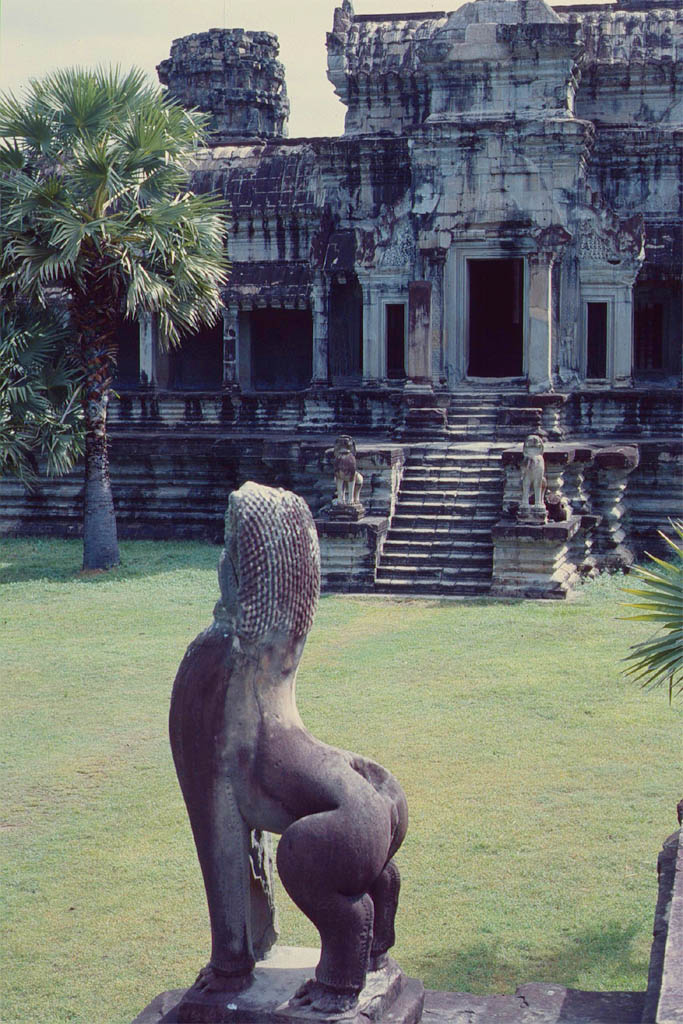
| What can the stone animal tell
|
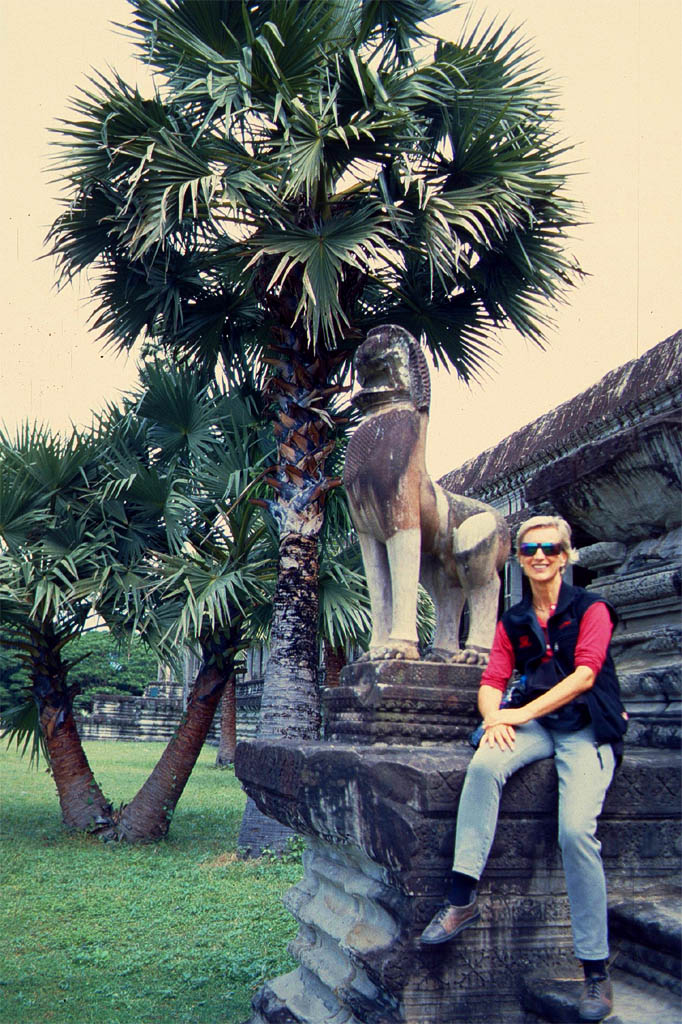
| Even Brigitte does not know
|
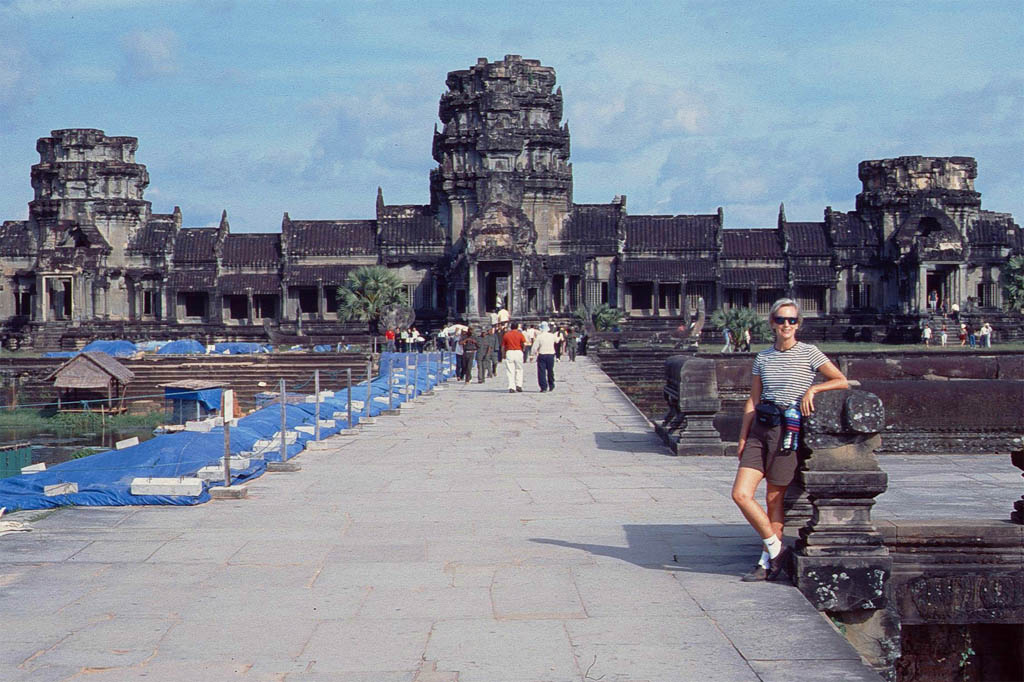
| Another Temple
|
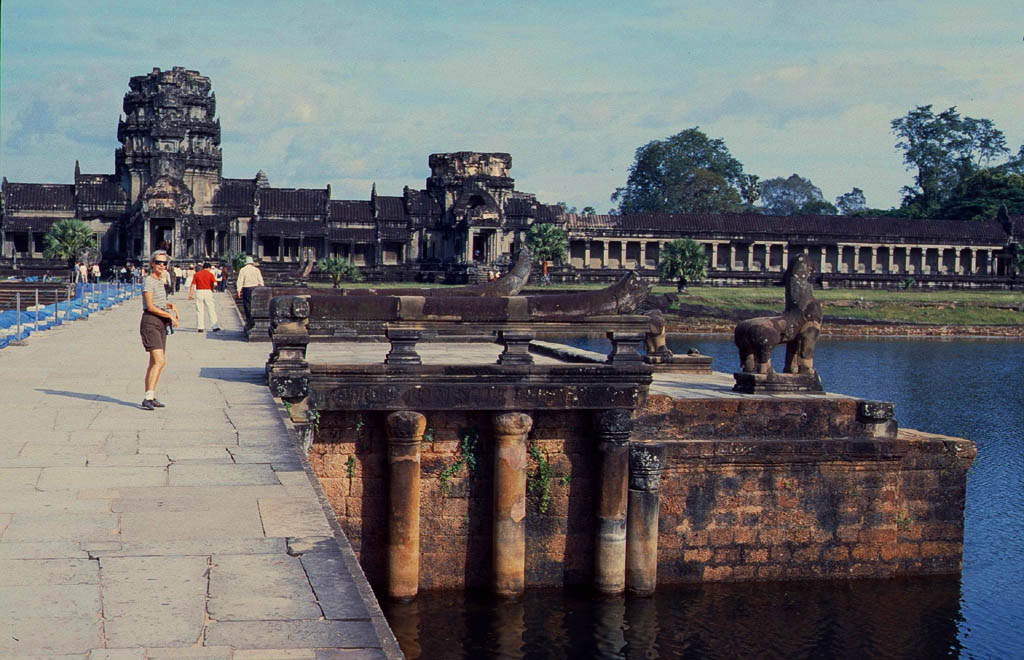
| With a lake in front
|
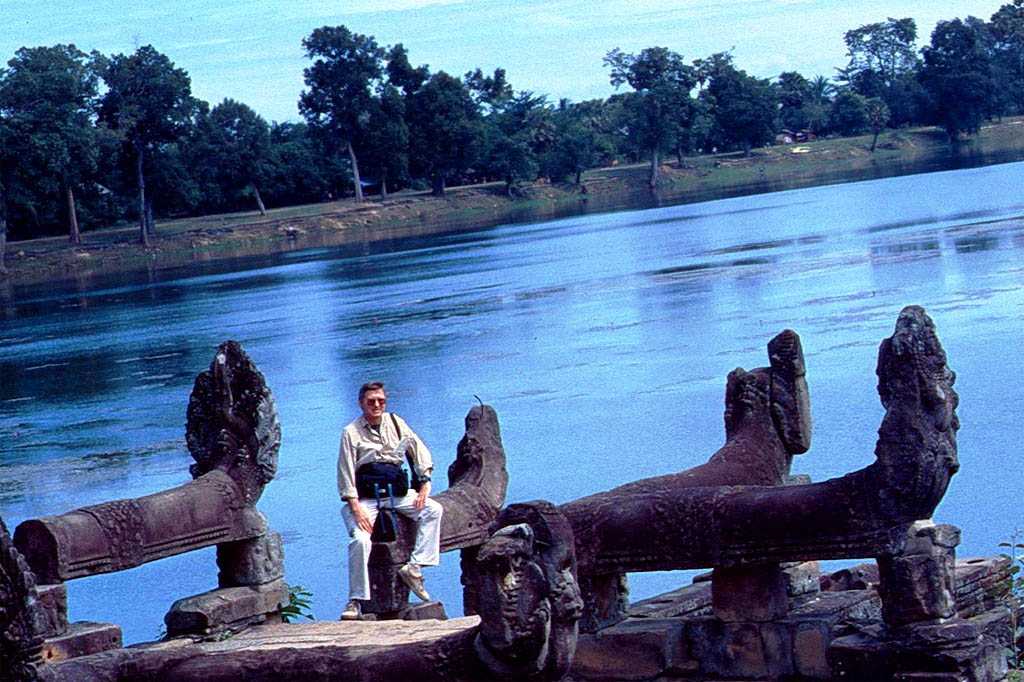
| Another lake and I
|
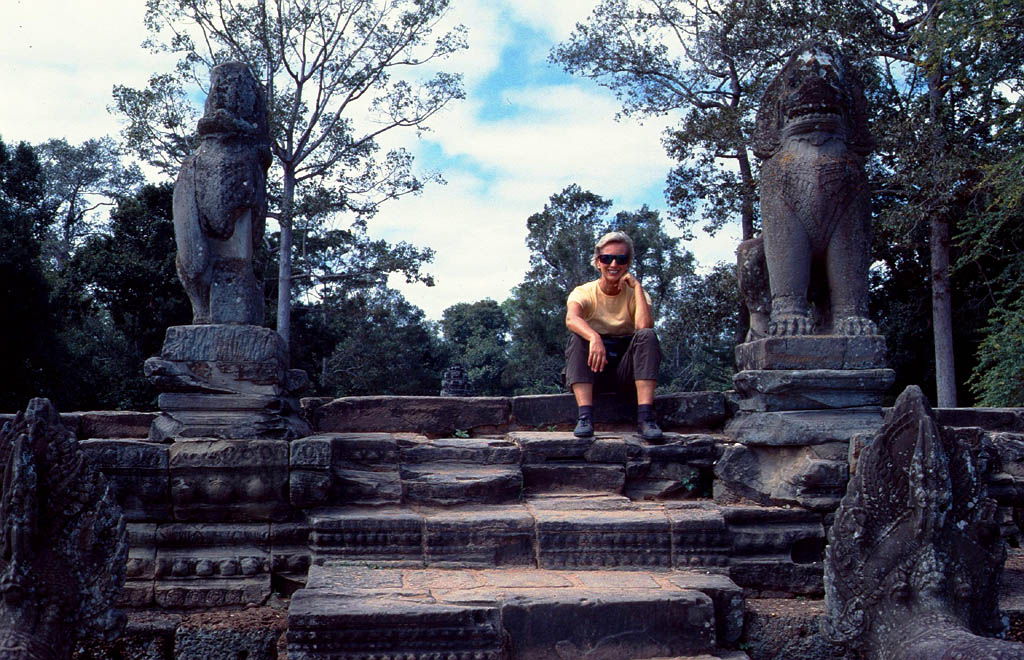
| Brigitte sitting in front
|
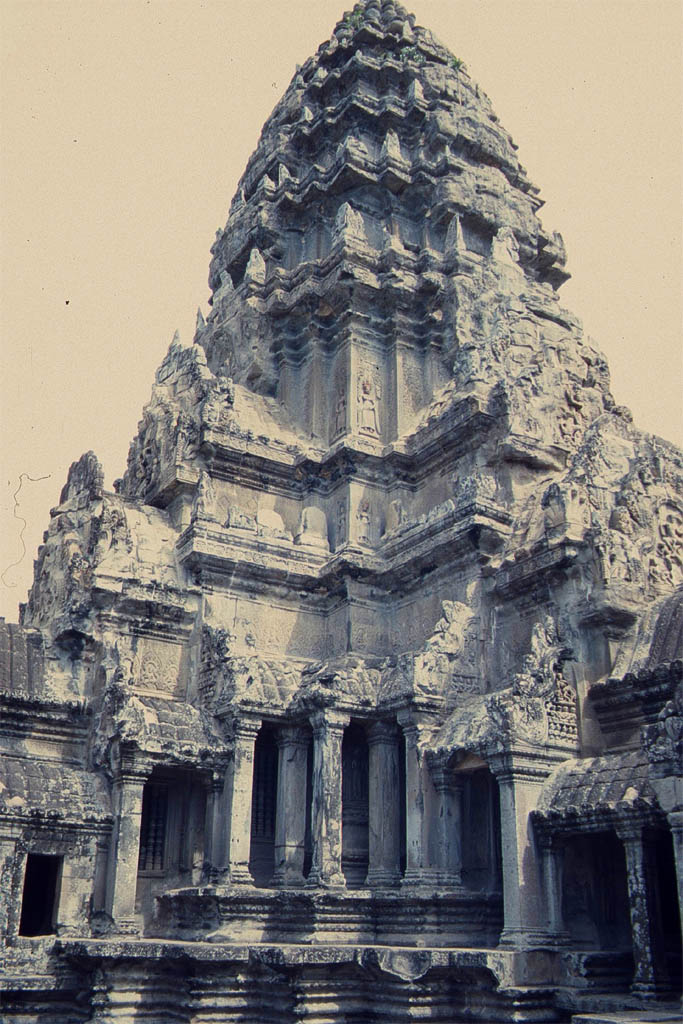
| Just a single tower
|
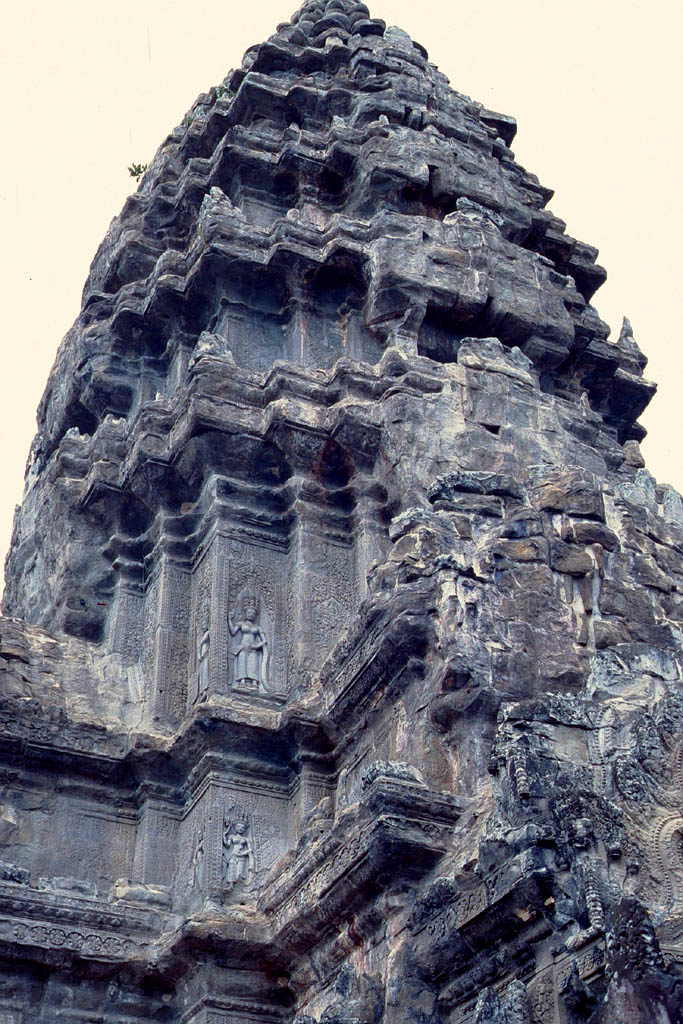
| With nice ornaments
|
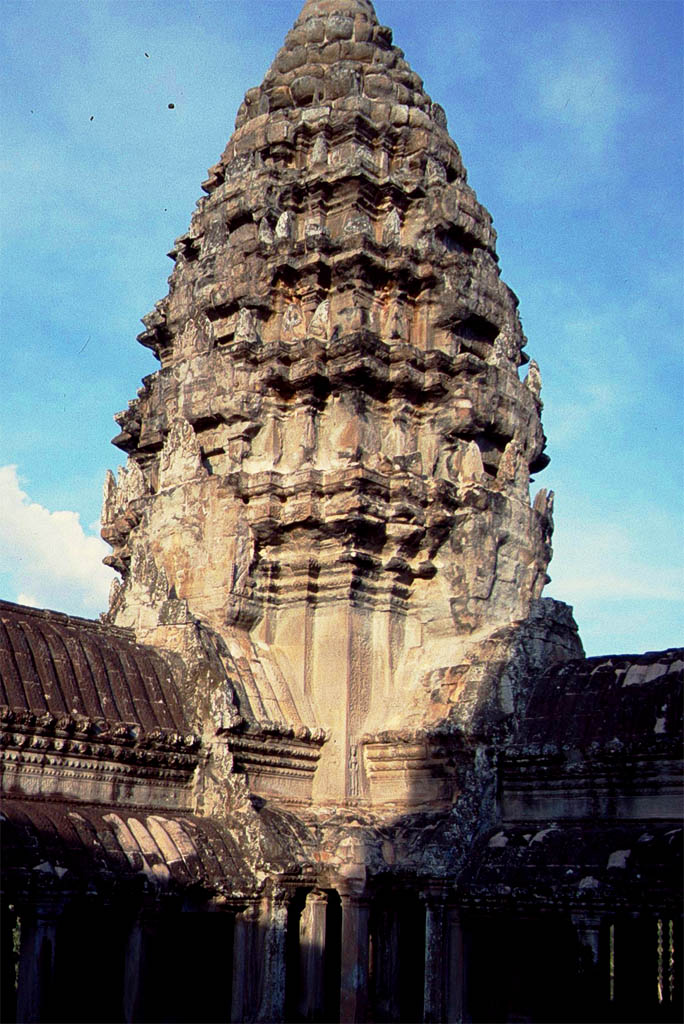
| Another tower, same style
|
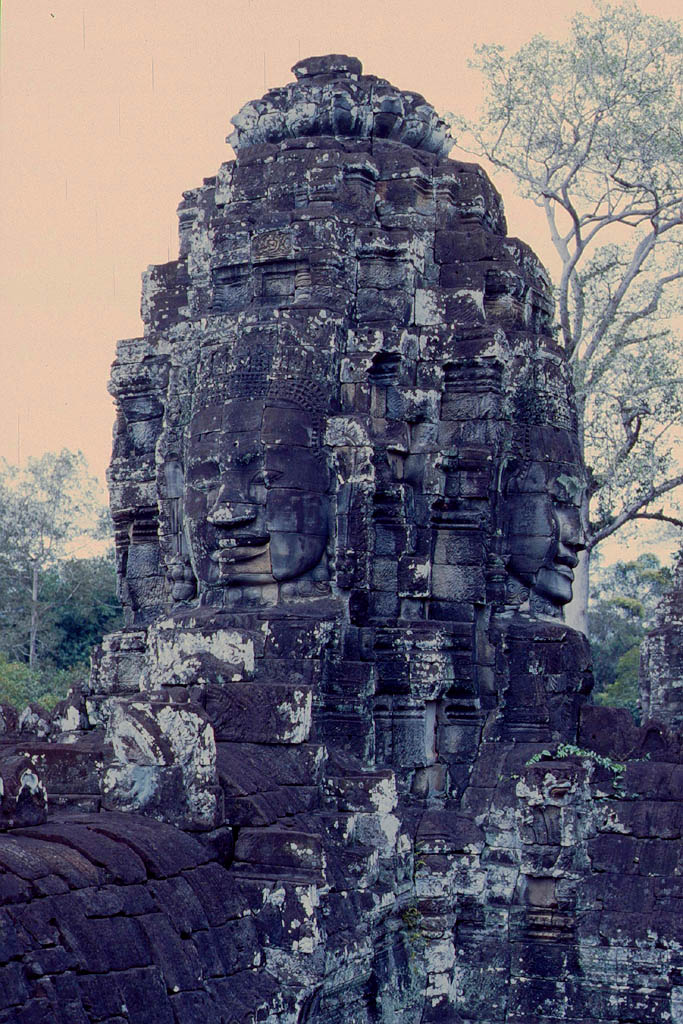
| This is a different tower with faces on four sides
|
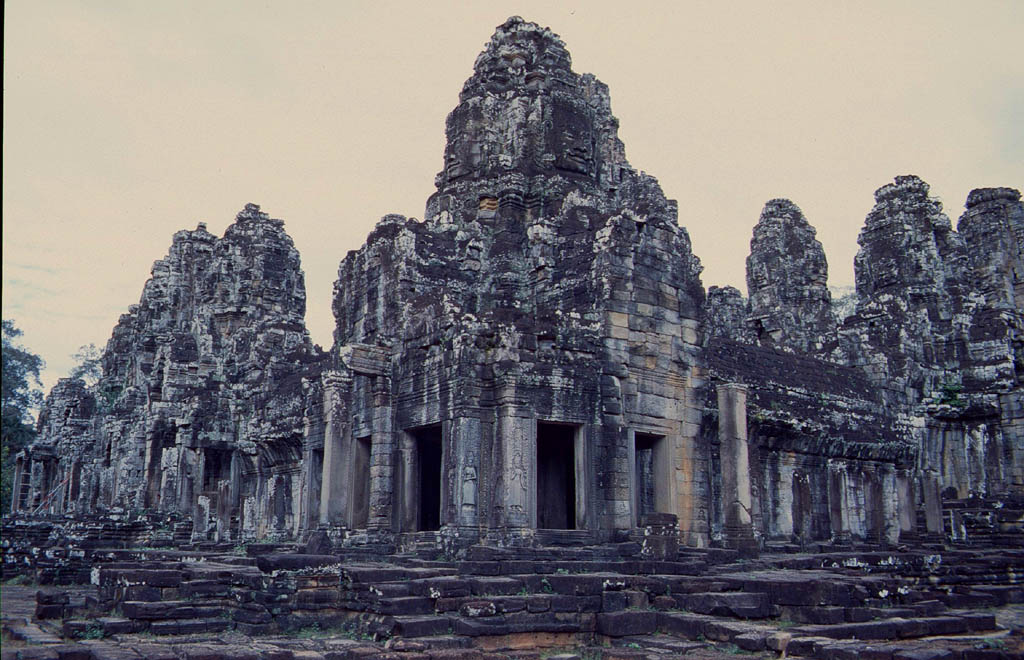
| Another temple with more towers
|
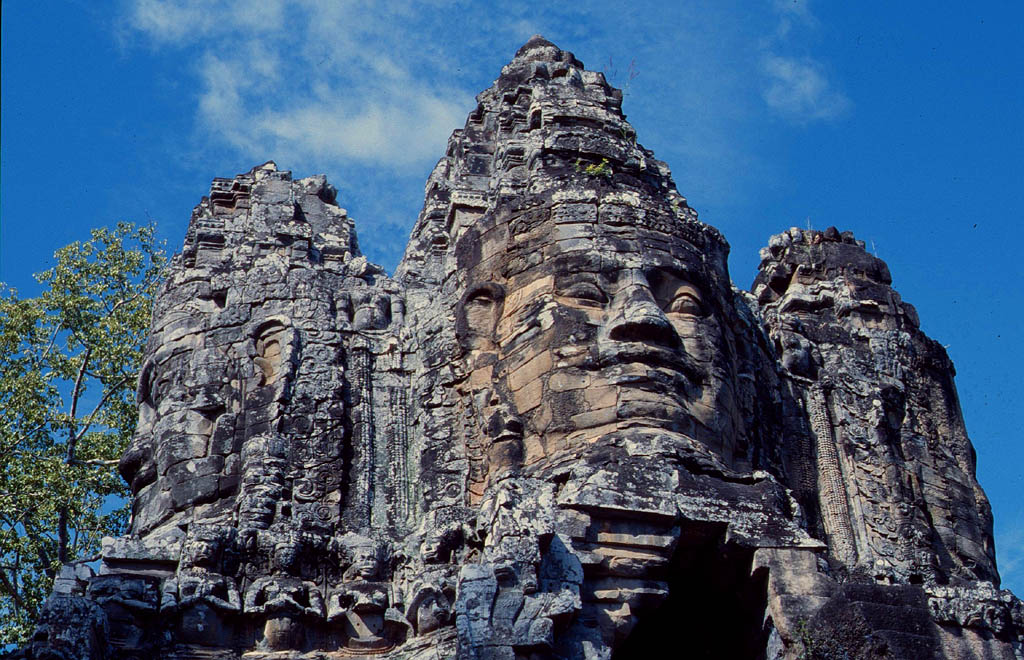
| Each one with faces all around
|
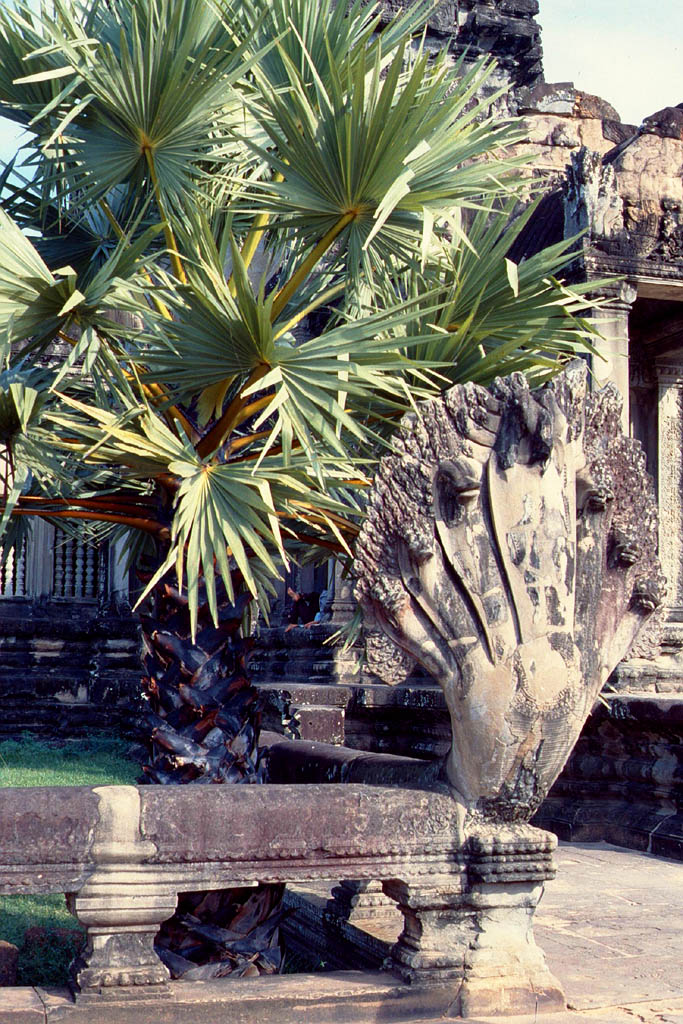
| Cobras are dangerous
|
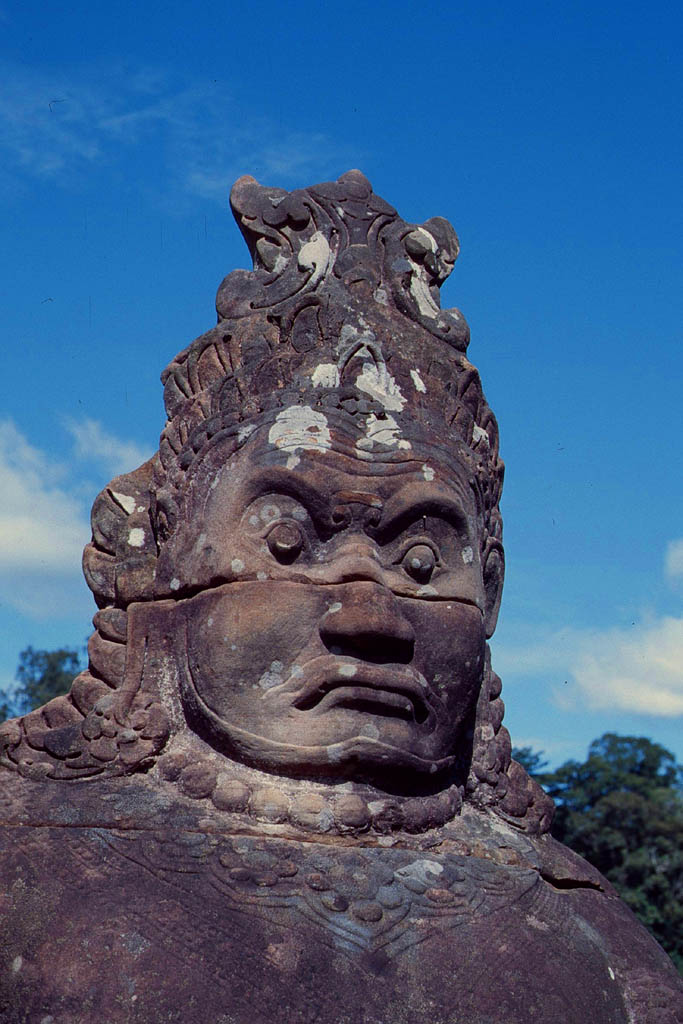
| He really looks serious
|
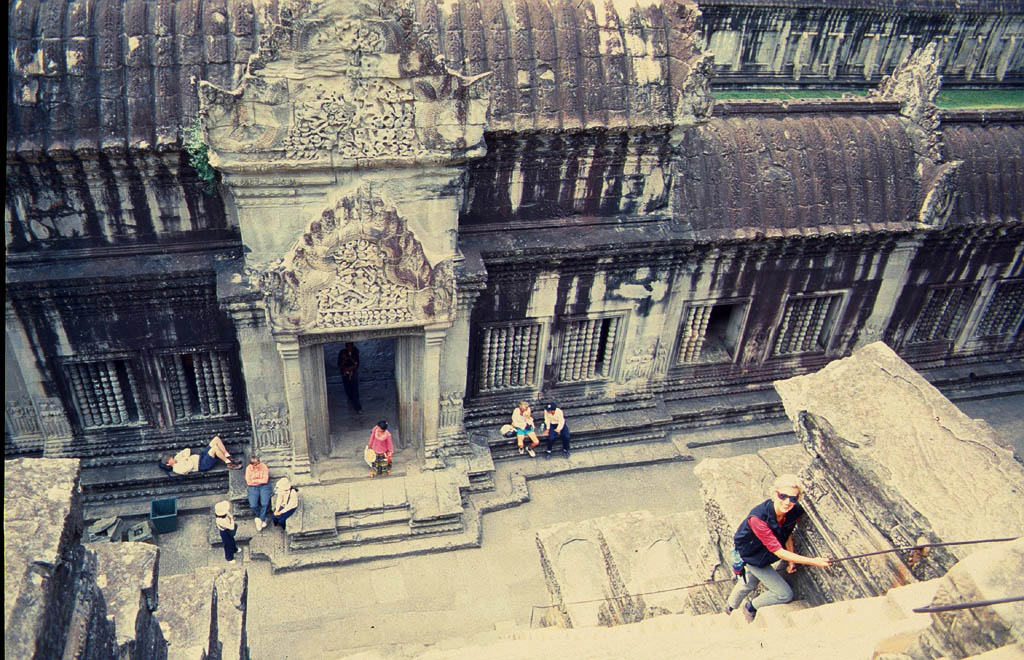
| Climbing up the steep steps
|
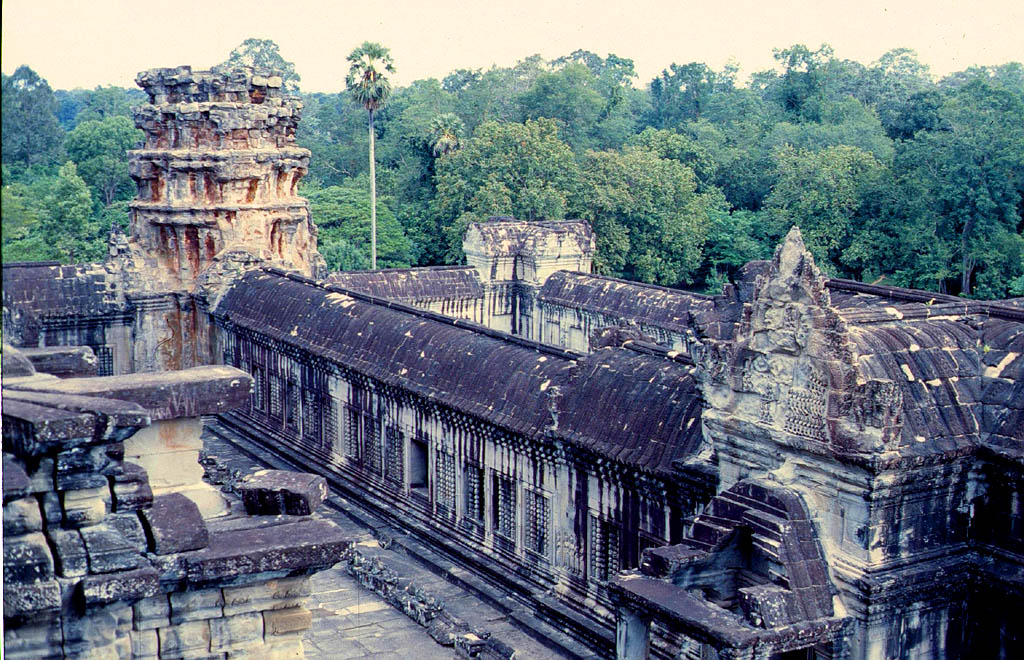
| To enjoy the view from above
|
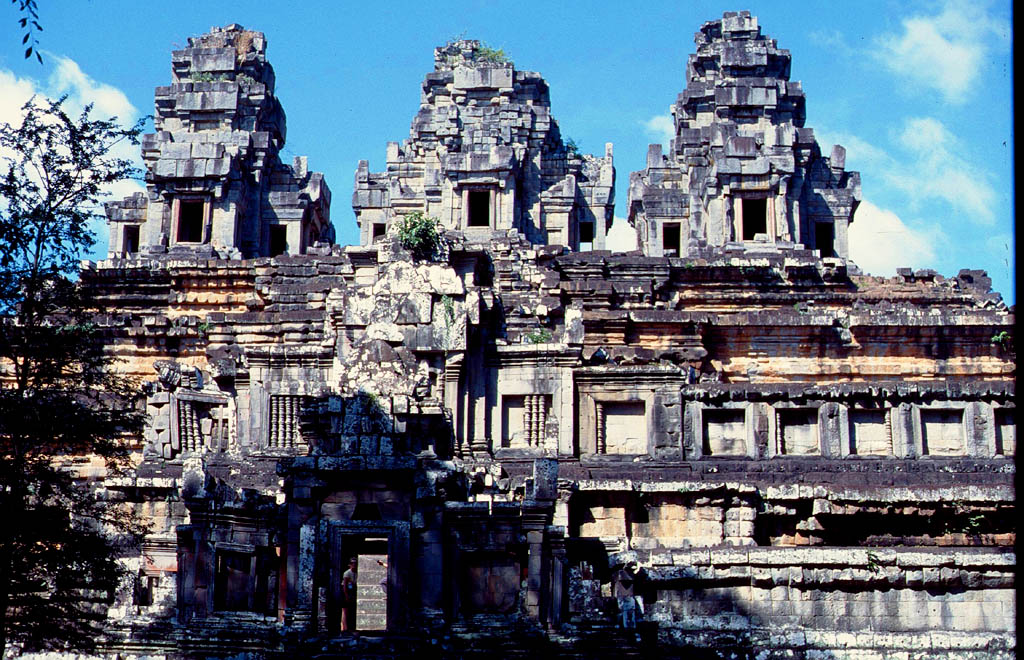
| Another temple
|
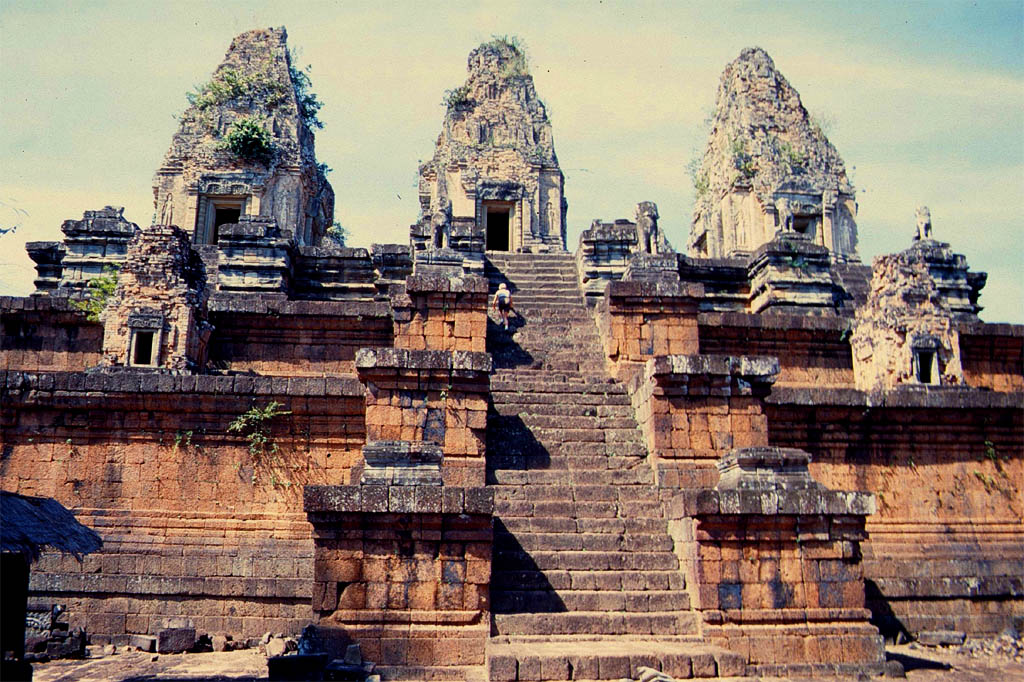
| And one more temple
|
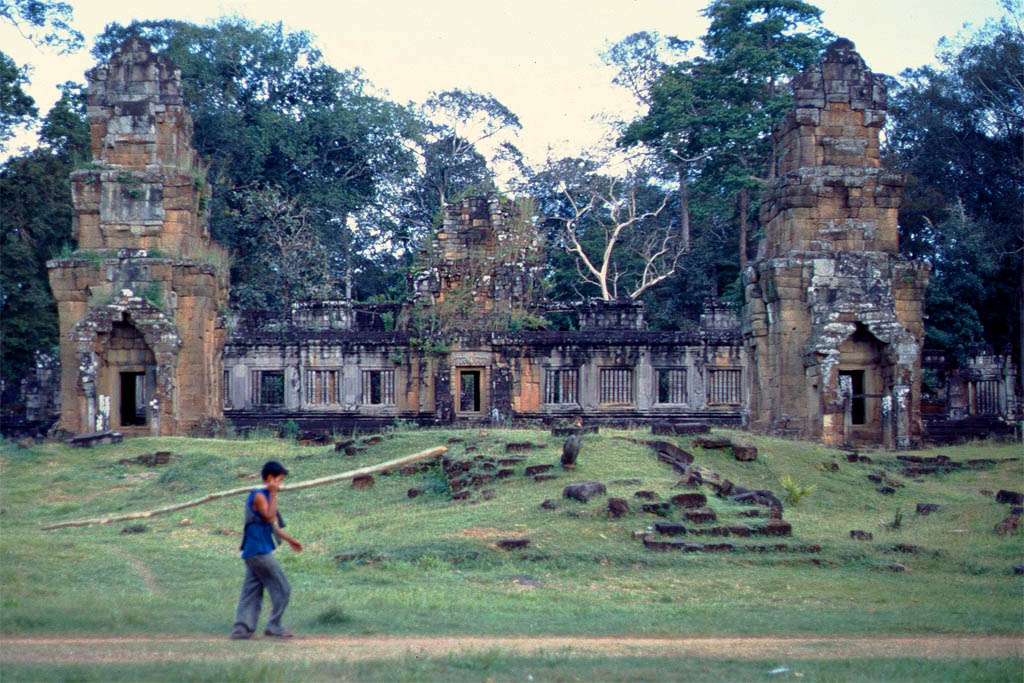
| This one is a little older
|
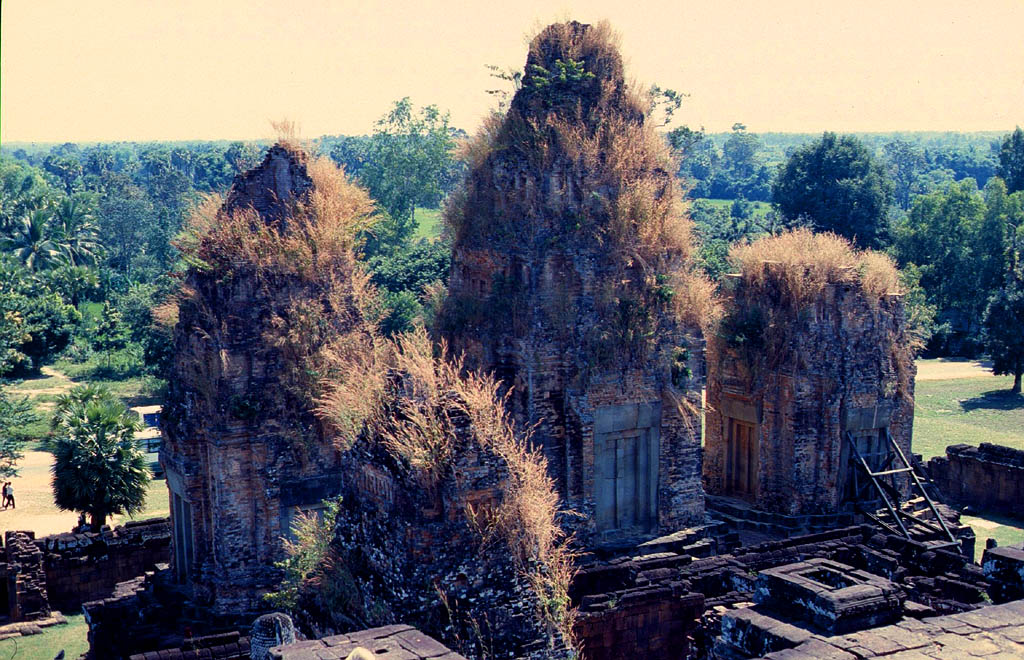
| This one even more older
|
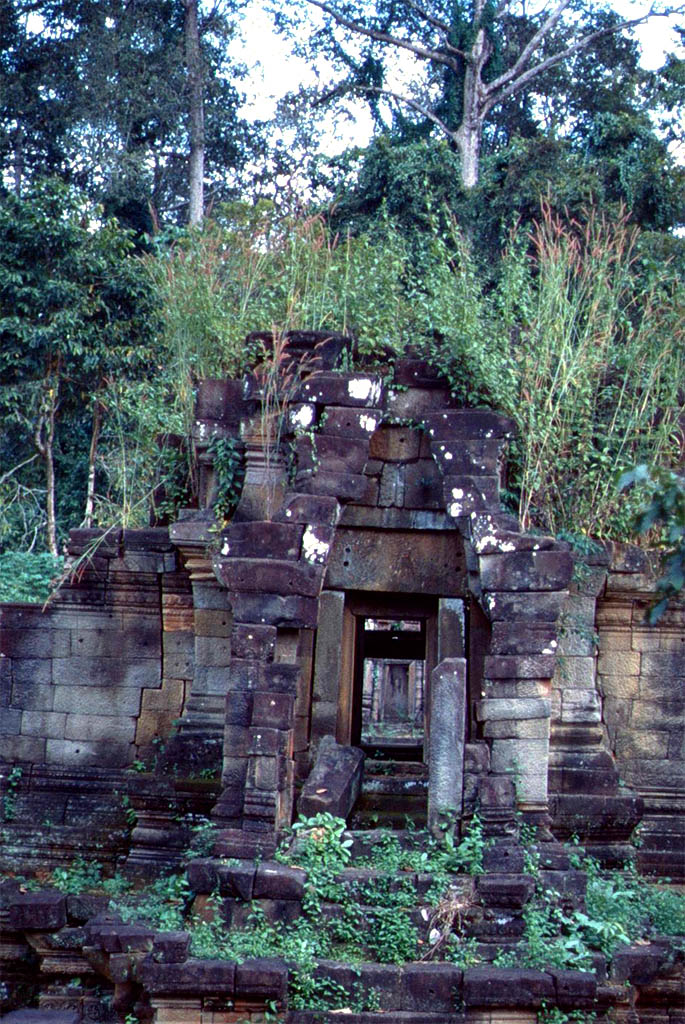
| Walking deeper
|
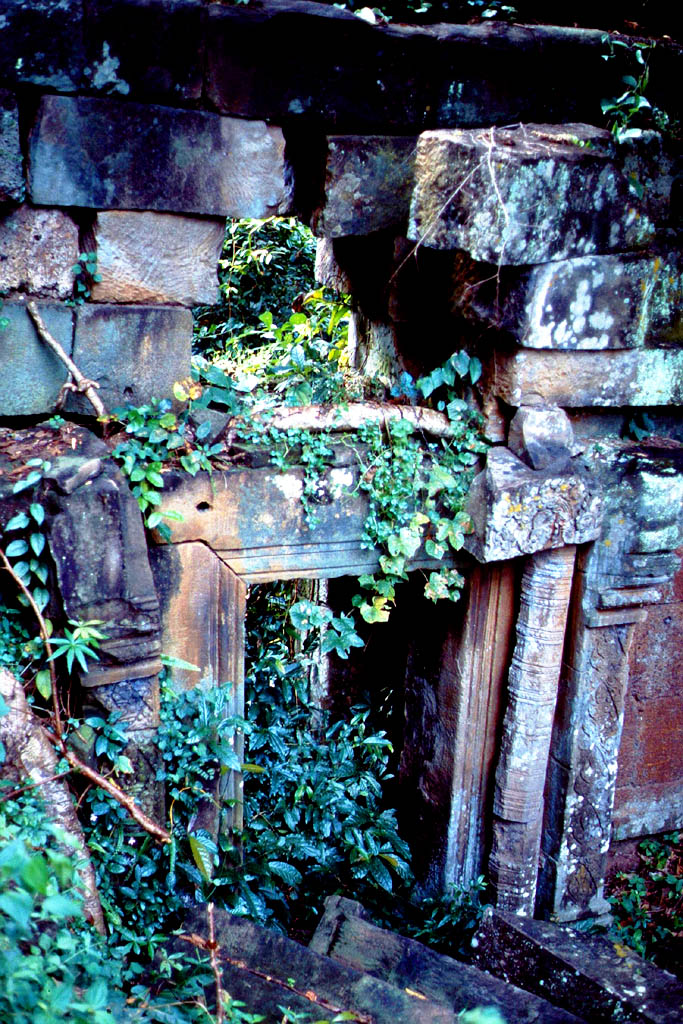
| And deeper into the jungle
|
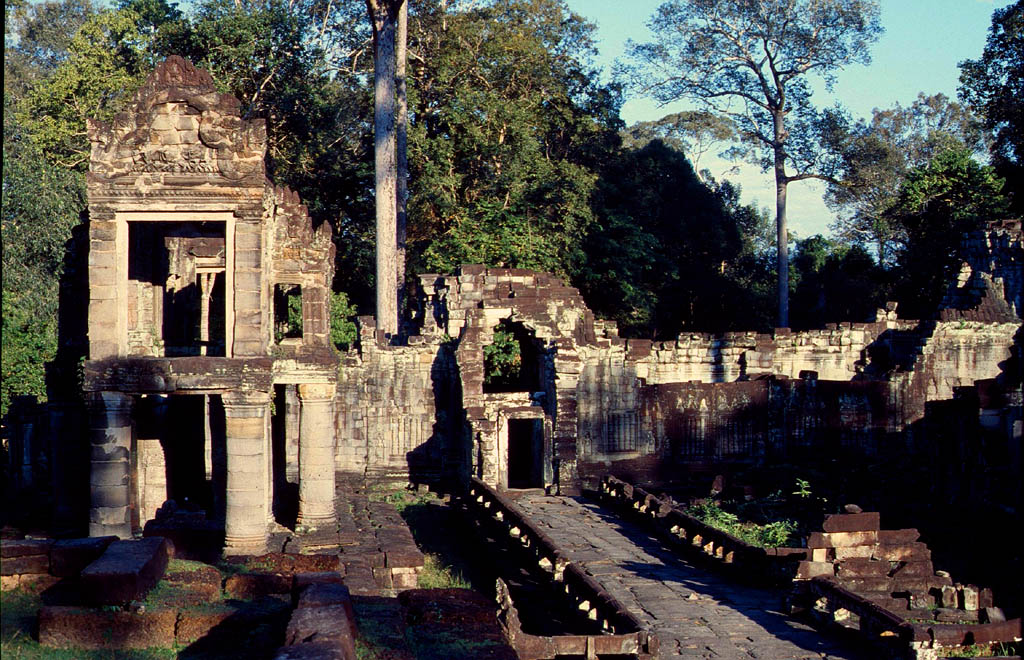
| Many more temples around
|
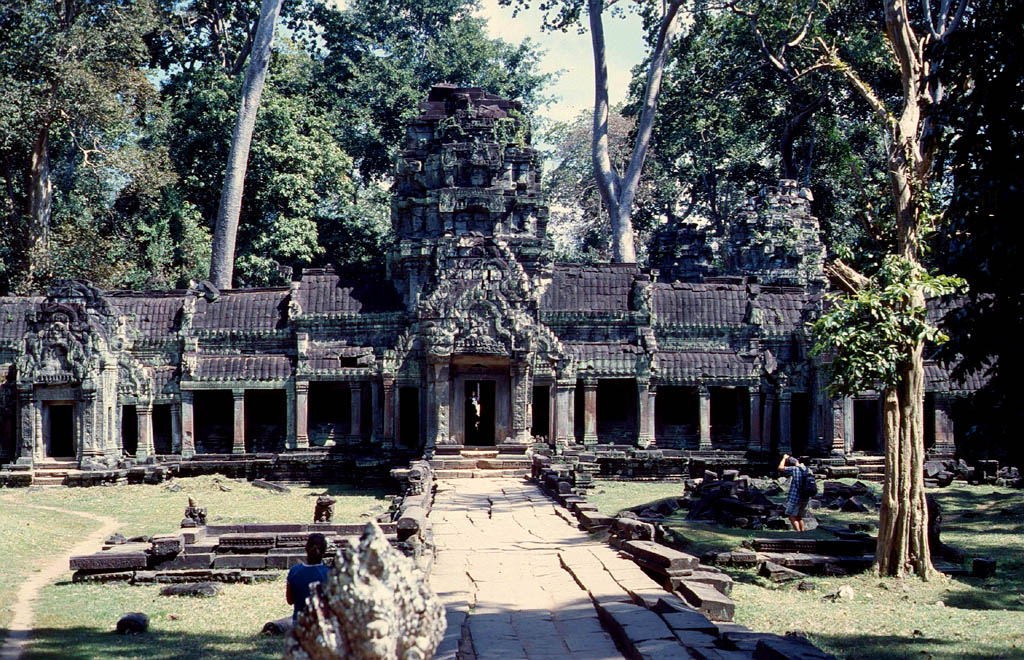
| Previously all overgrown
|
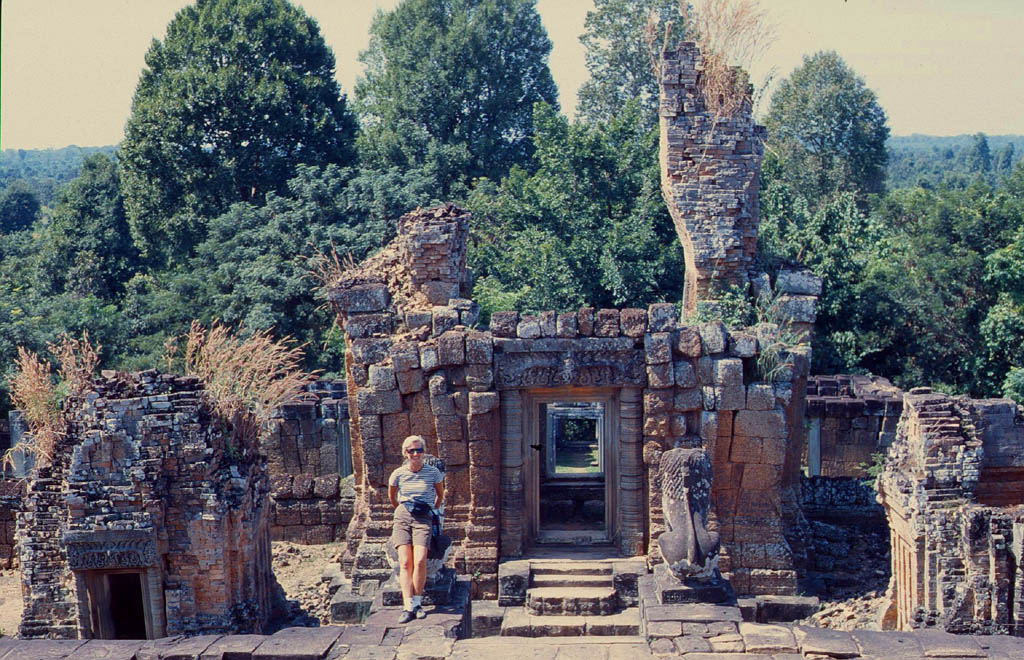
| Many tried to be restored
|
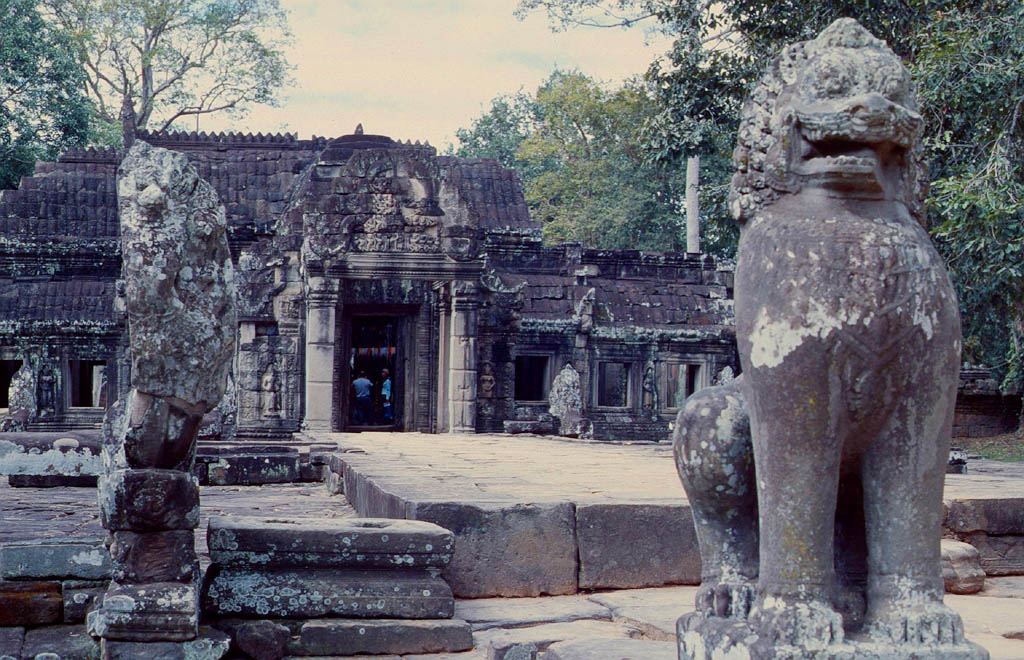
| To be preserved
|
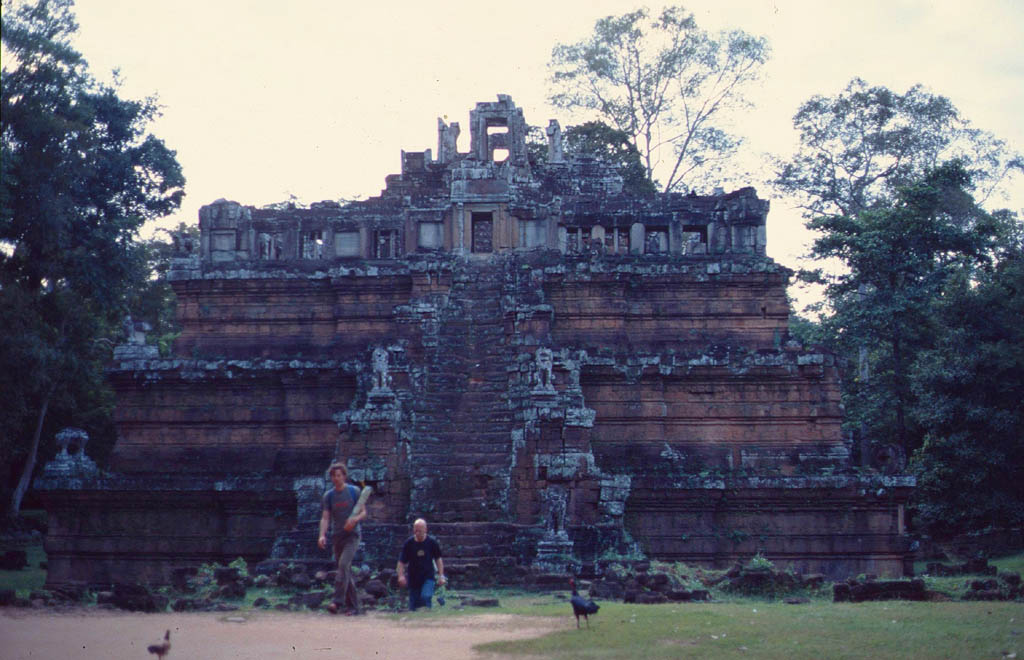
| Beautiful architecture
|
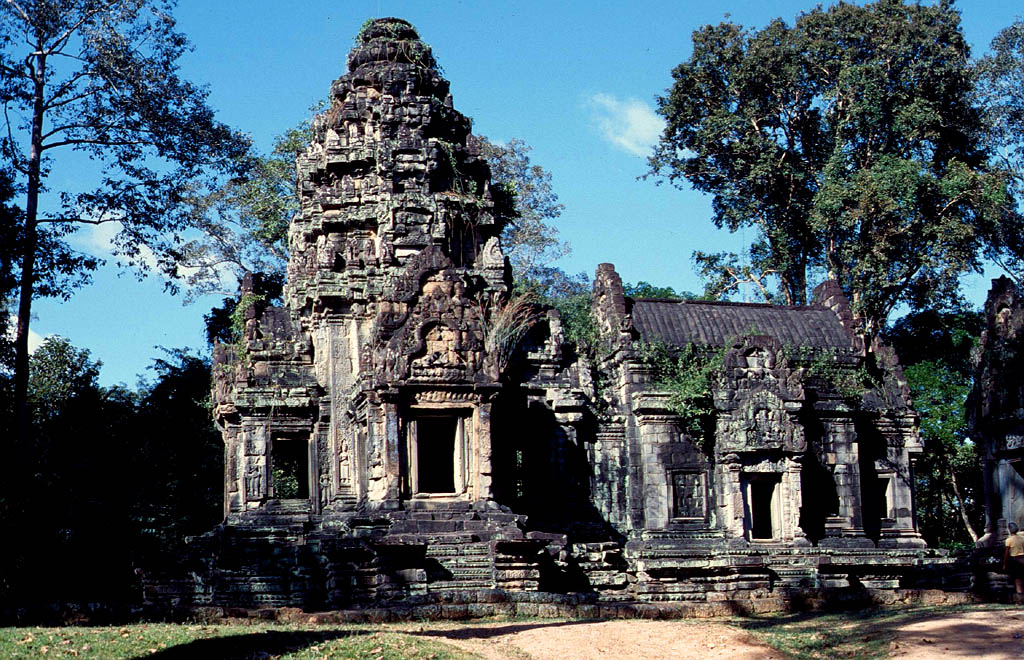
| Beautiful design
|
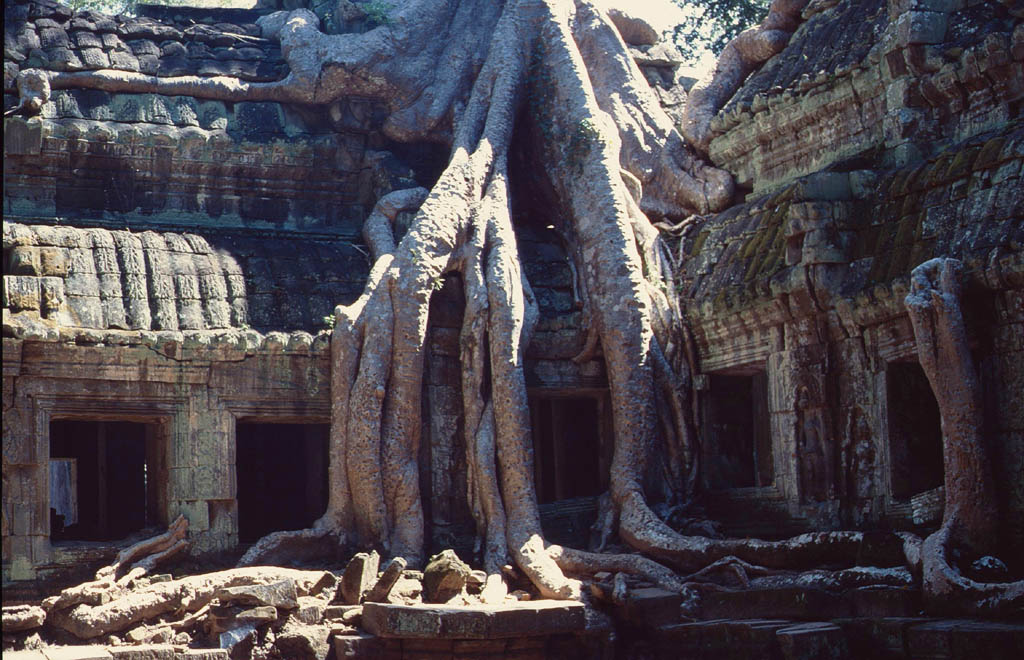
| Lara Croft was here
|
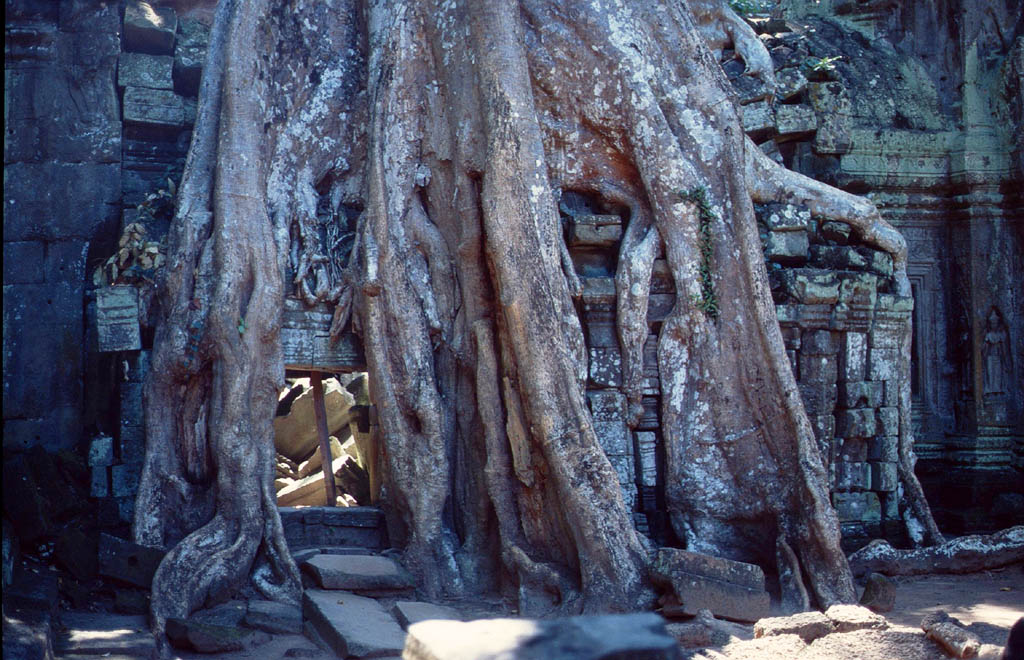
| Me too
|
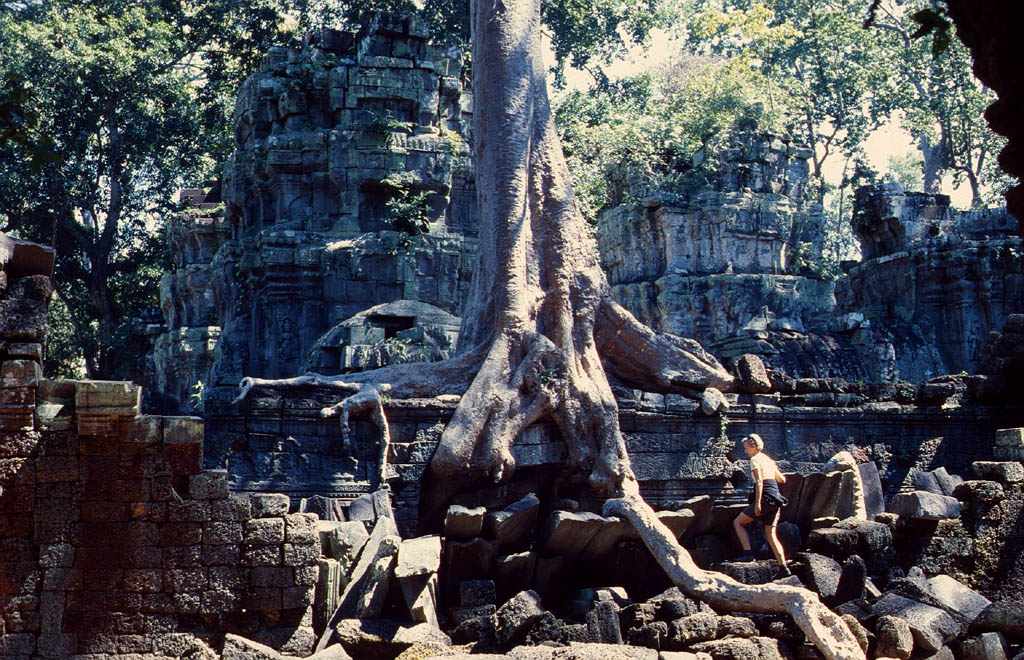
| Brigitte climbing up the tree
|
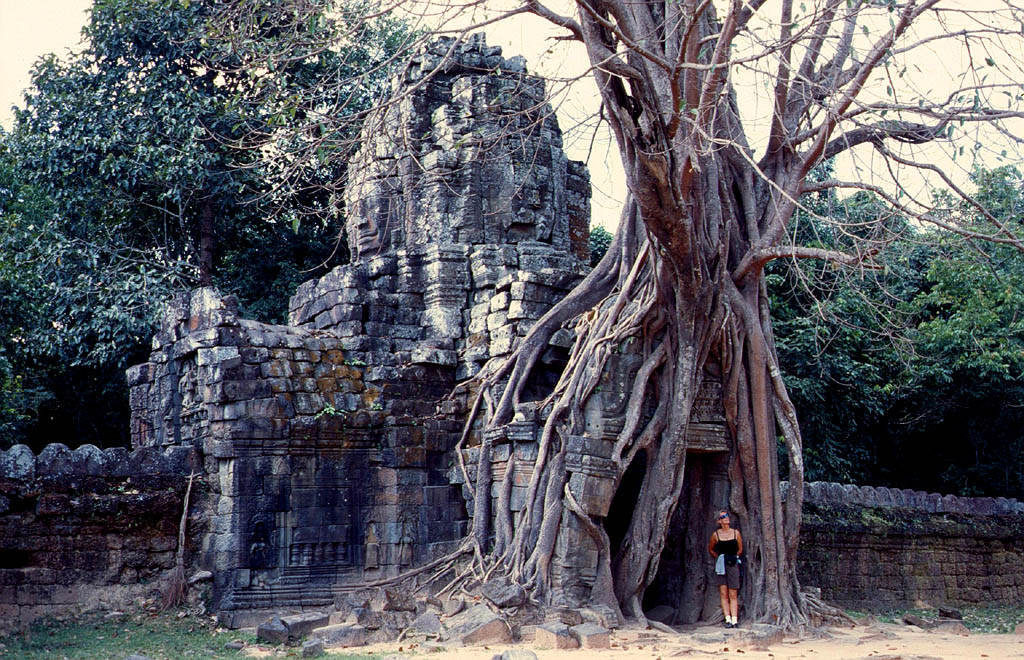
| She should better stay under the tree
|
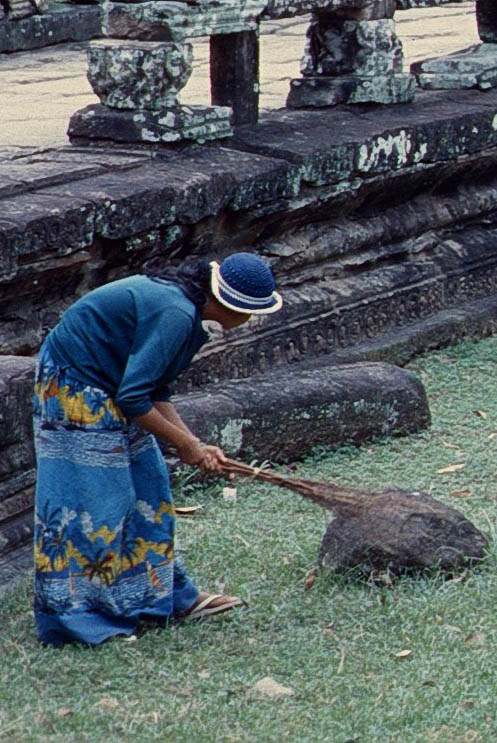
| Dusting the stones
|
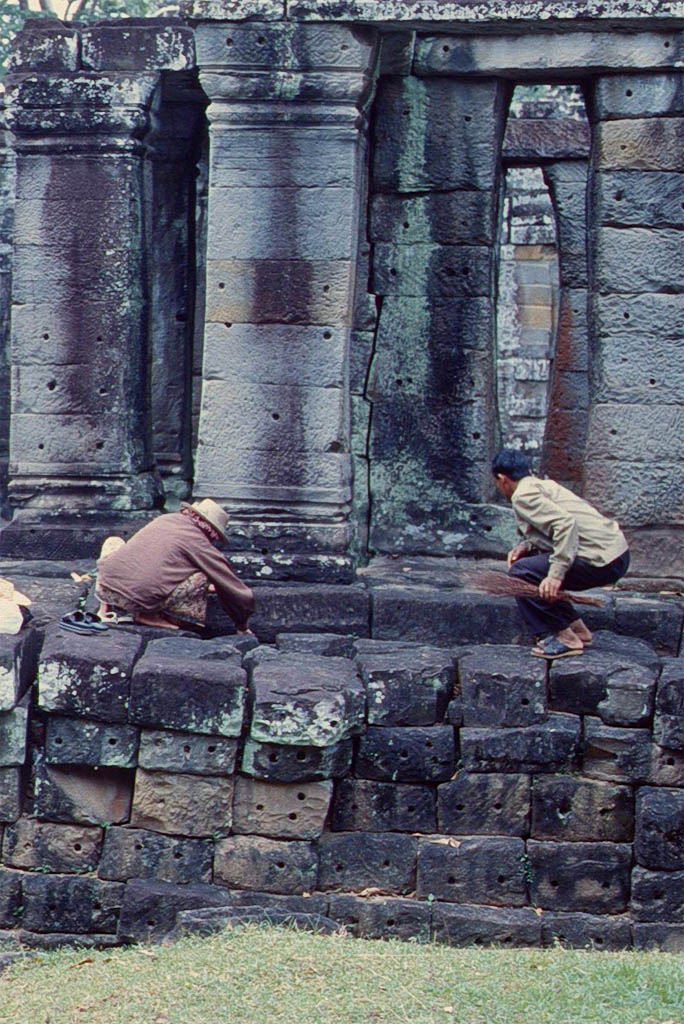
| And sweeping the platforms
|
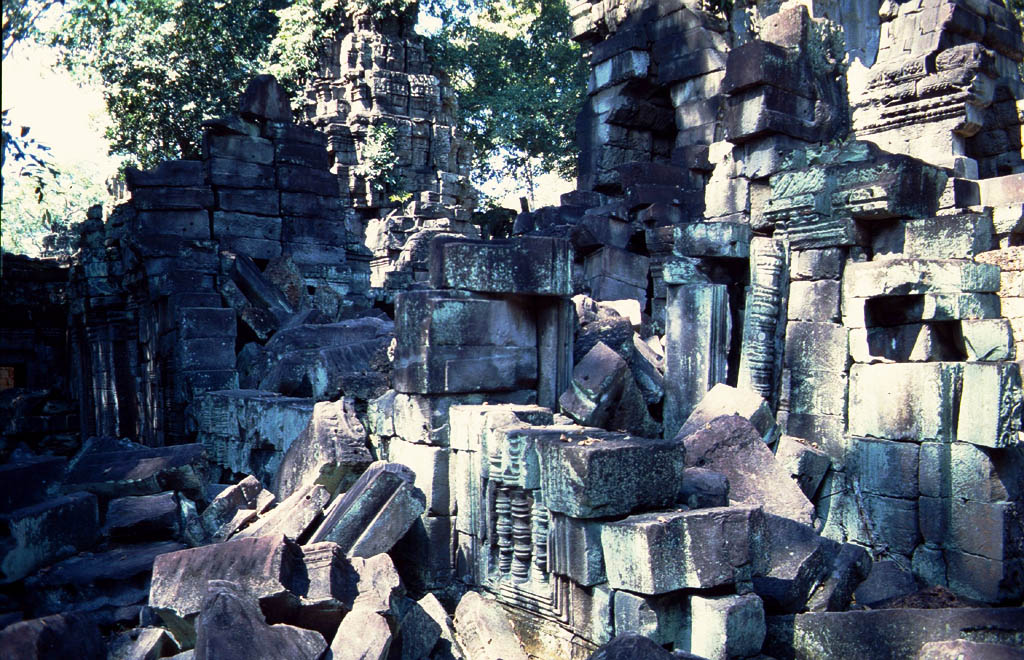
| A lot of stones to dust
|
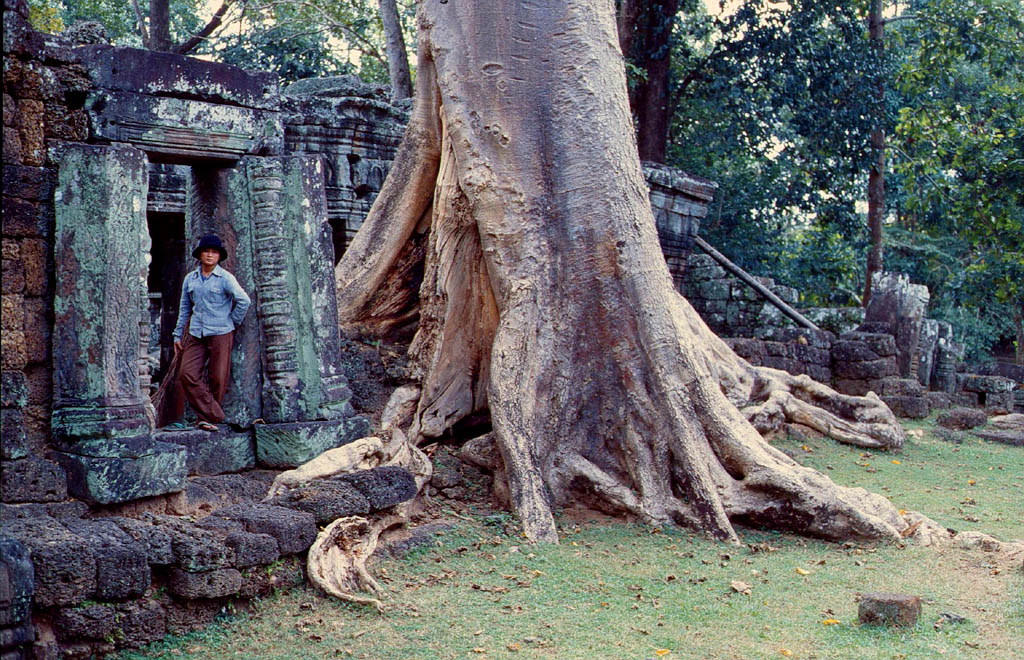
| Better to sweep the leaves
|
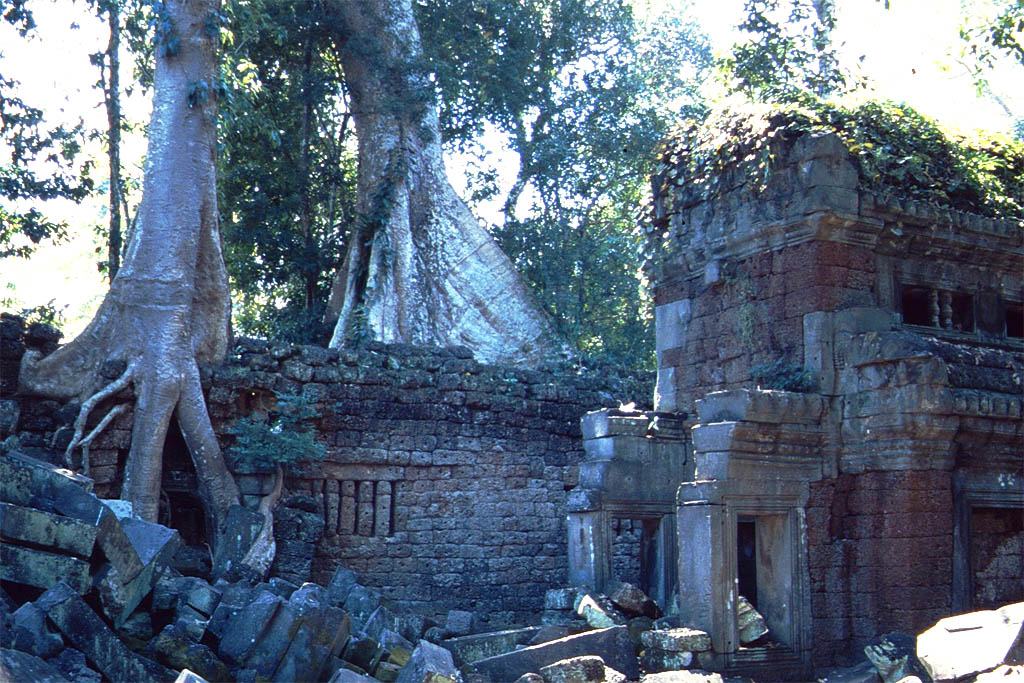
| Do not get hit
|
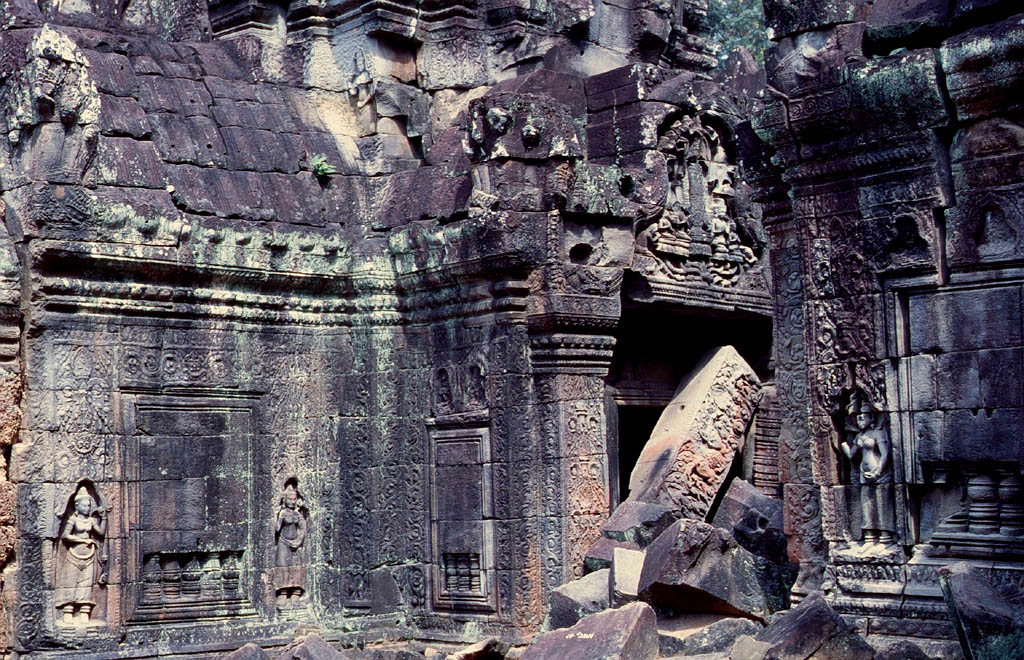
| By a falling stone
|
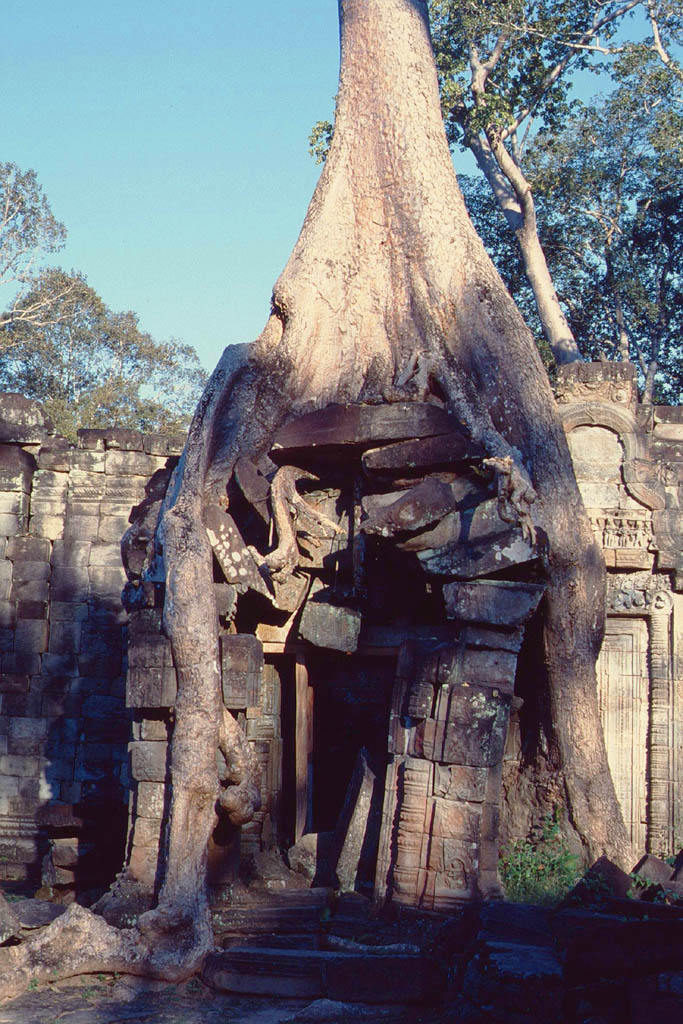
| I would not walk though this door
|
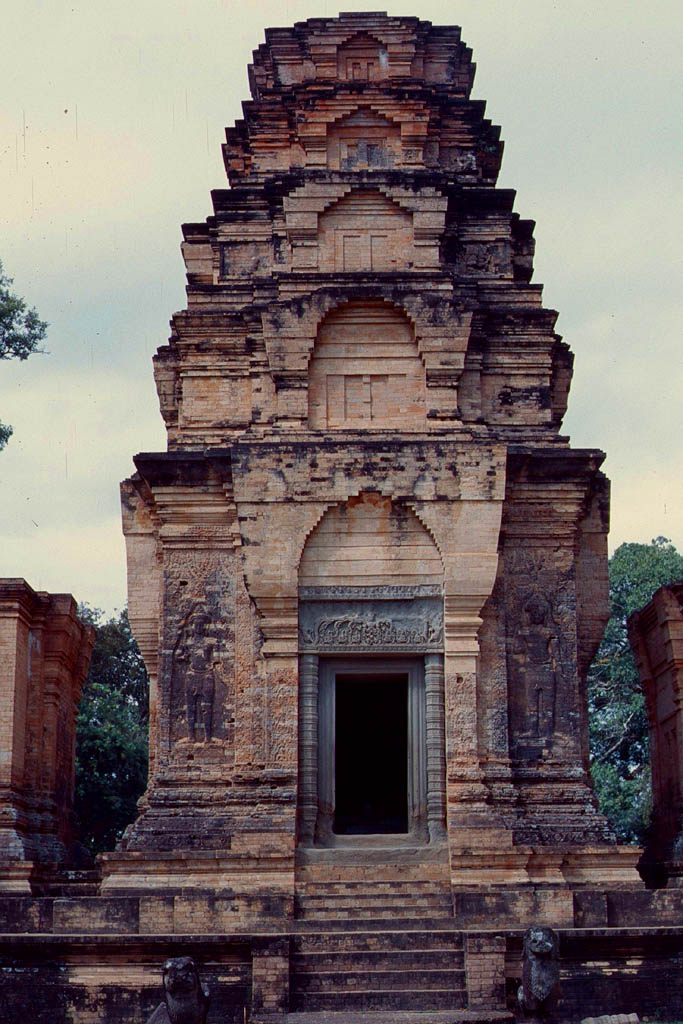
| But this one looks safe
|
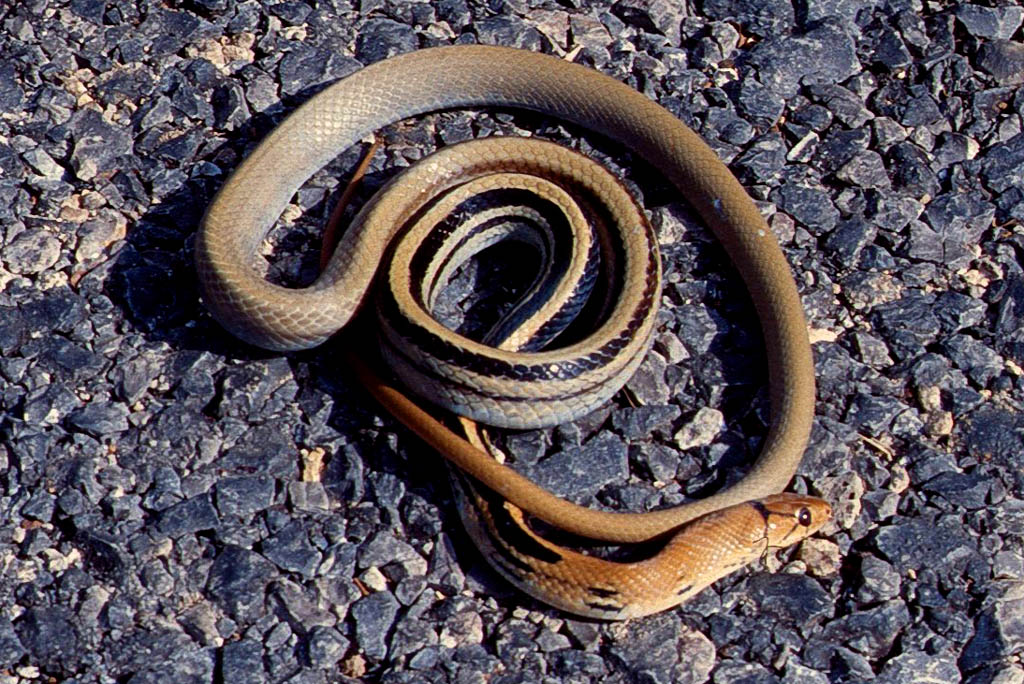
| Where does the snake come from
|
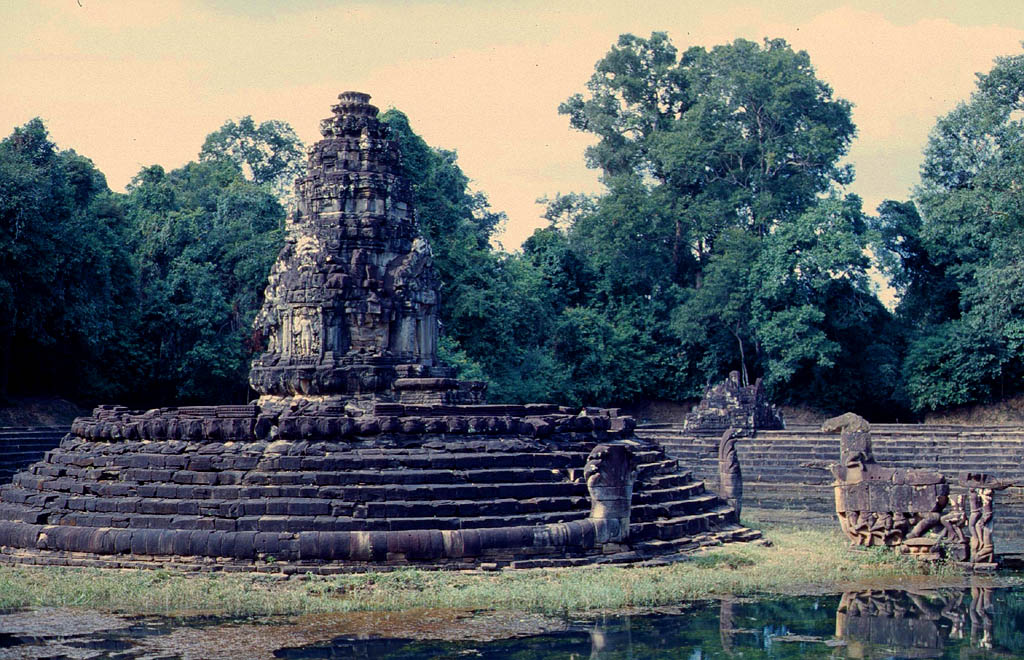
| Maybe from this holy snake rotunda
|
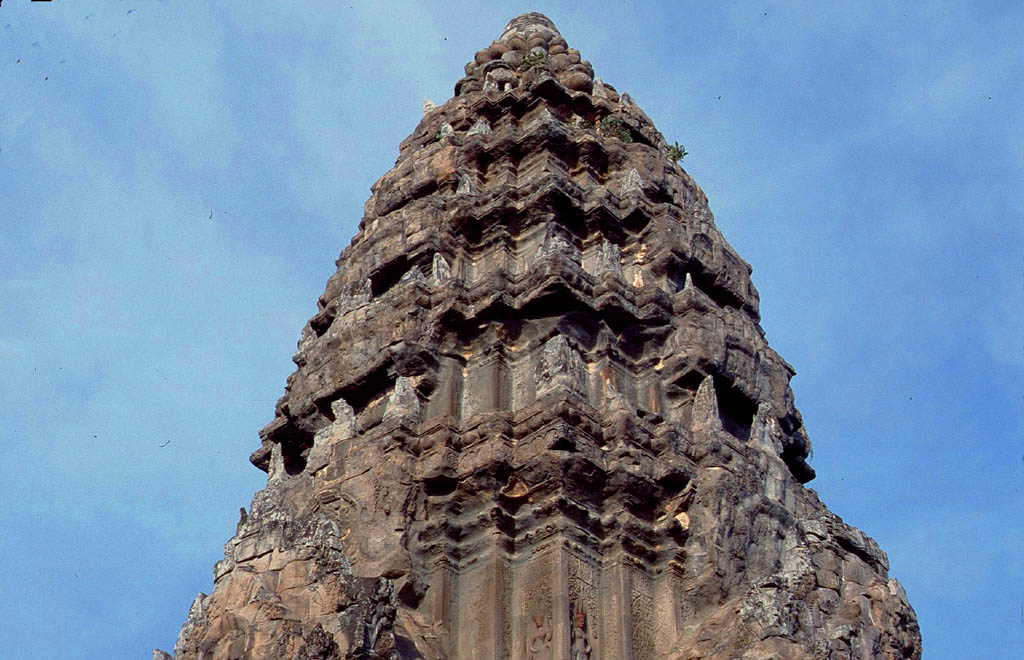
| What a nice tower
|
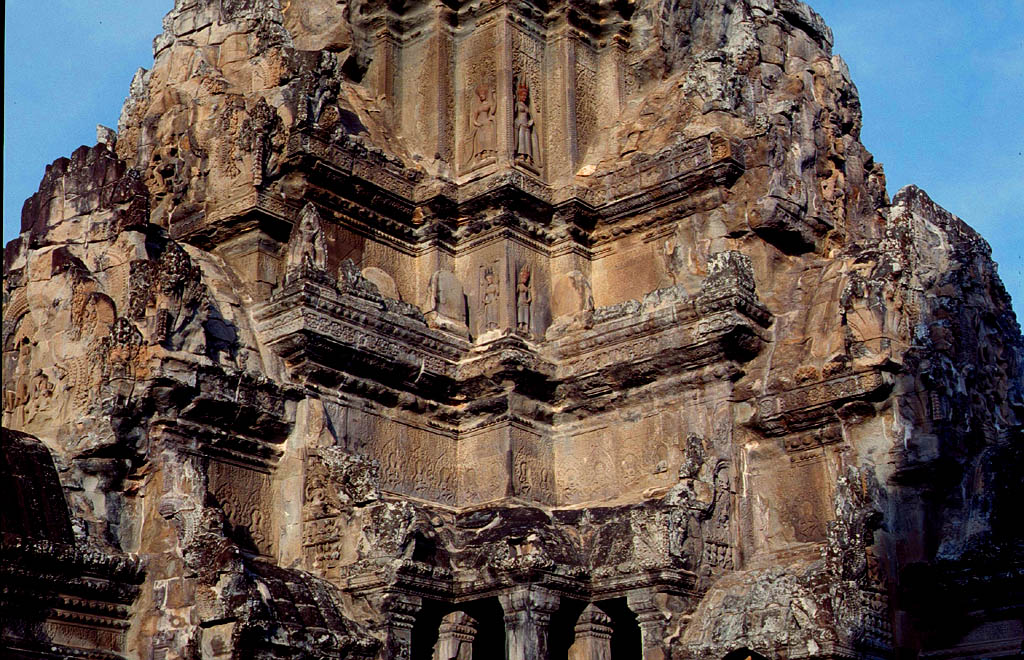
| With nice ornaments
|
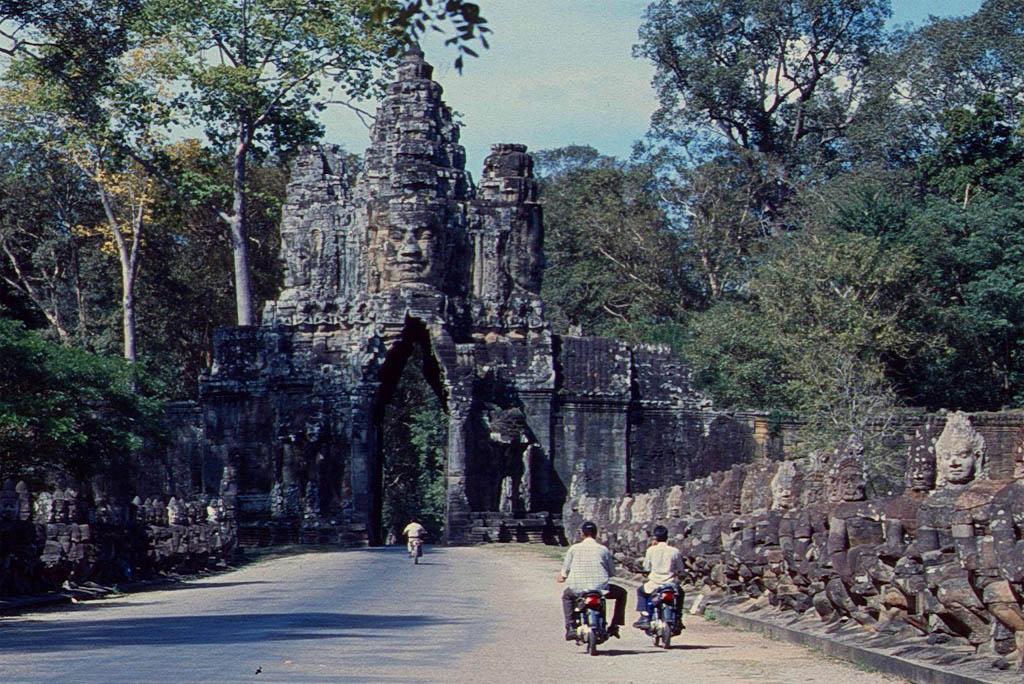
| Back on the road
|
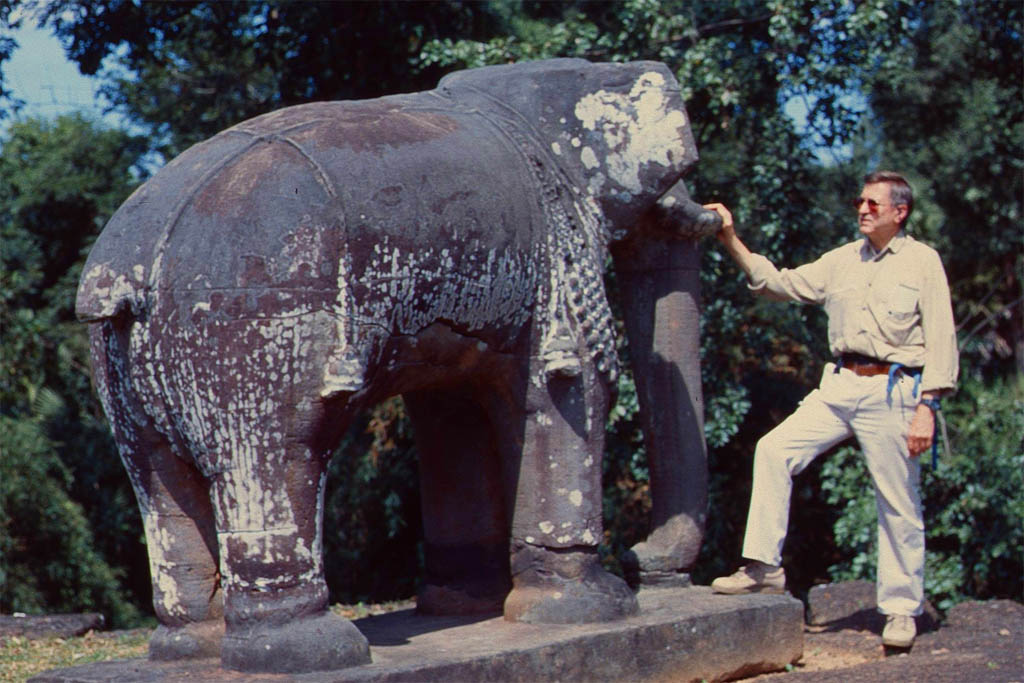
| Can we ride this elephant
|
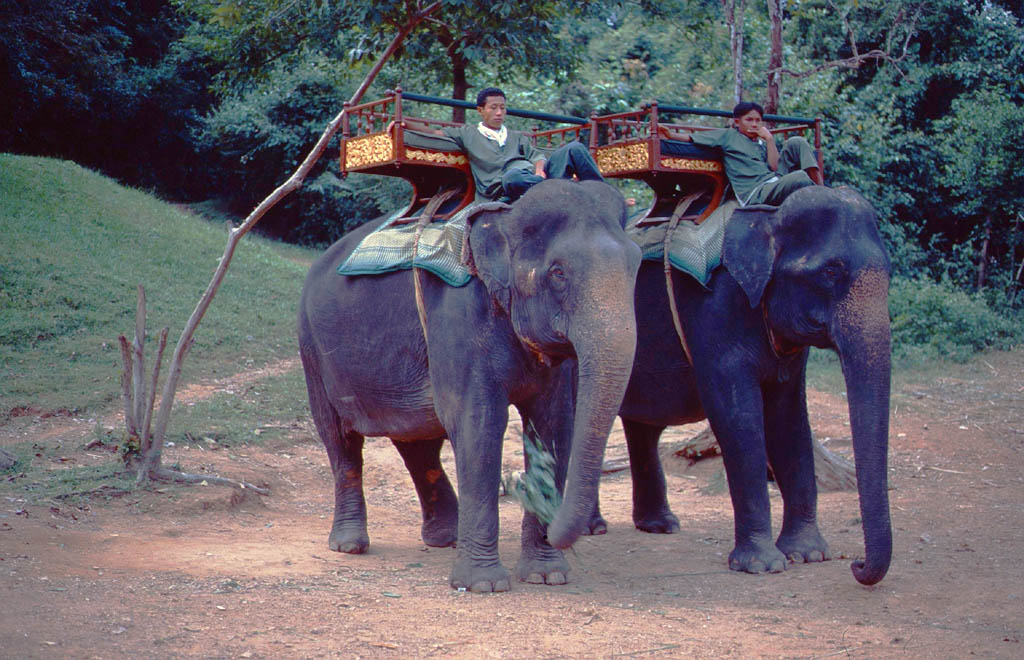
| Yes, we could ride an elephant
|
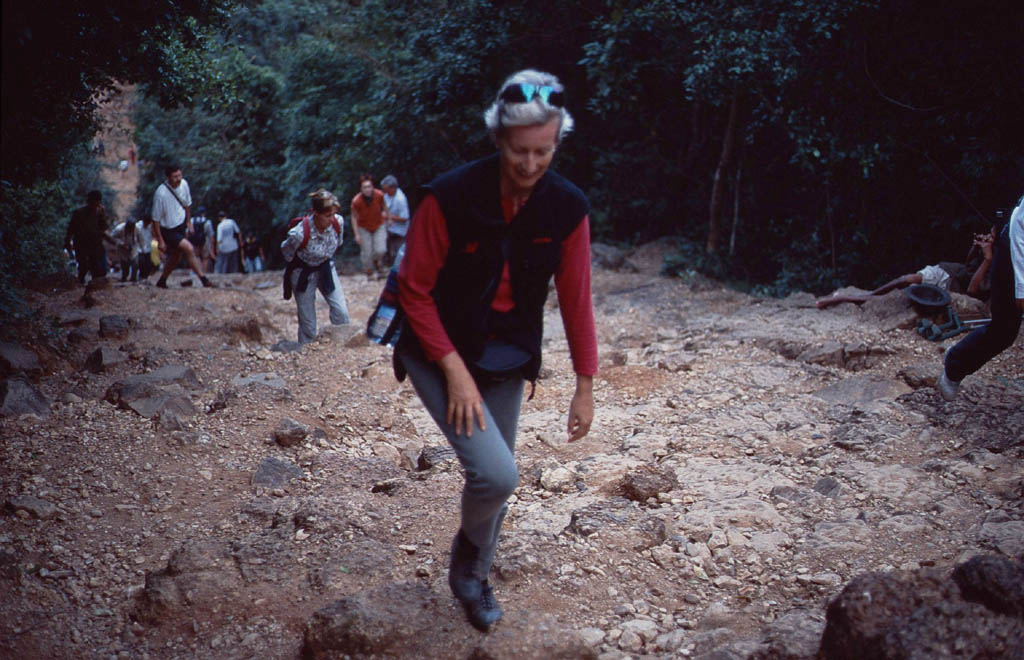
| But we rather walk up the hill
|
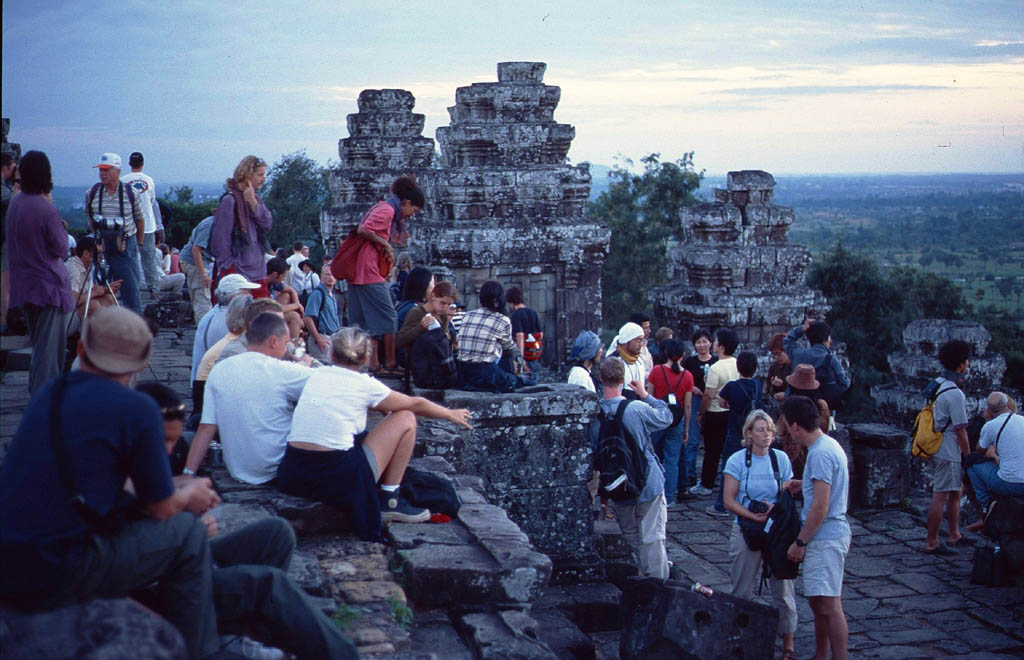
| To watch with the crowd
|
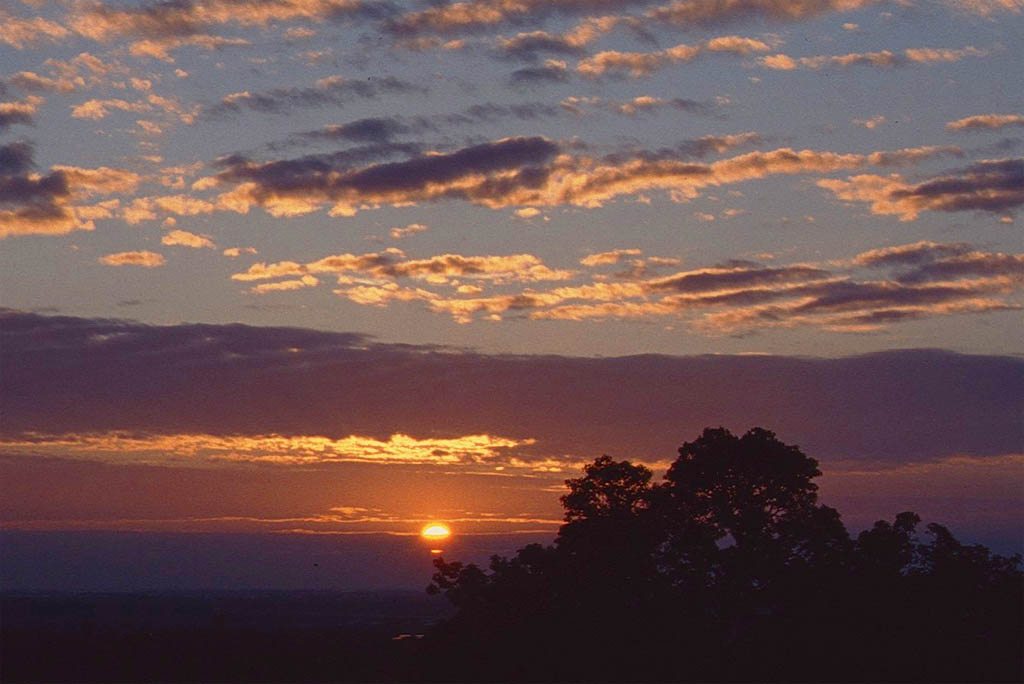
| the sun set from the Phnom Bakheng temple
|
How to get now to Phnom Penh. There are several ways. The best one is by boat over the Tonle Sap lake. We booked the trip at the guesthouse. They also gave us a business card of a guesthouse in Phnom Penh owned by relatives. They even phoned them up and told them to pick us up when we arrive there. What a service.
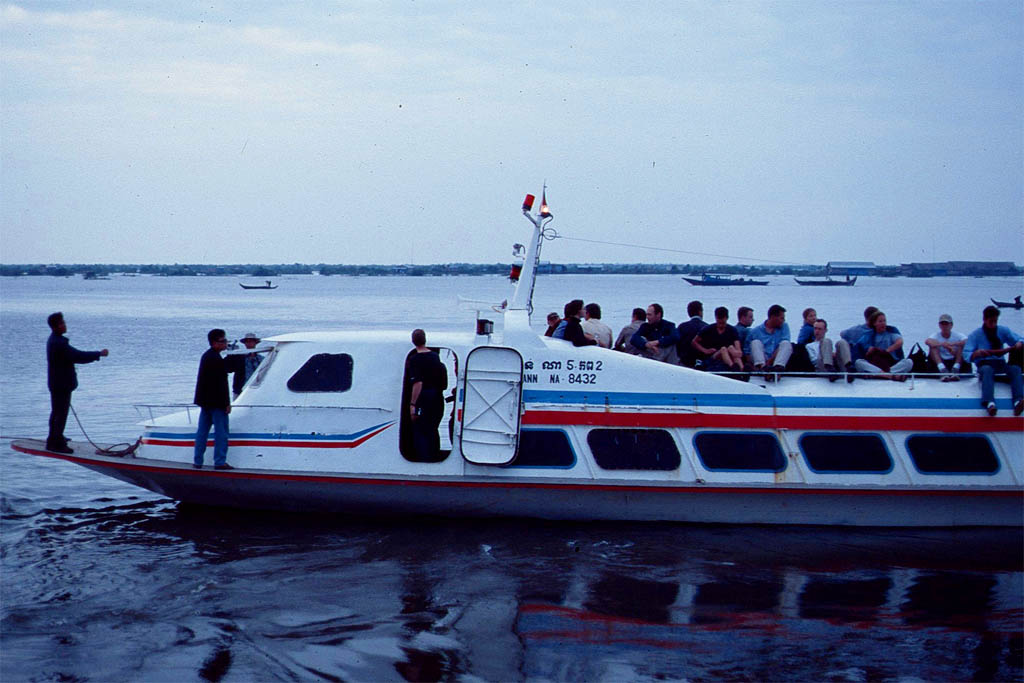
| With a speed boat on the Tonle Sap lake
|

| Riding on the roof to Phnom Penh
|
Sitting on the roof looked more dangerous than it really was. It would be more dangerous to sit inside in case the boat sinks. It is like a sardine can with only one door out. You would not be able to leave the boat fast enough, but jumping from the boat would be easy. But to survive you still have to be able to swim without a life vest (there were none). It was a nice ride in fresh air with interesting views of life along the lake.
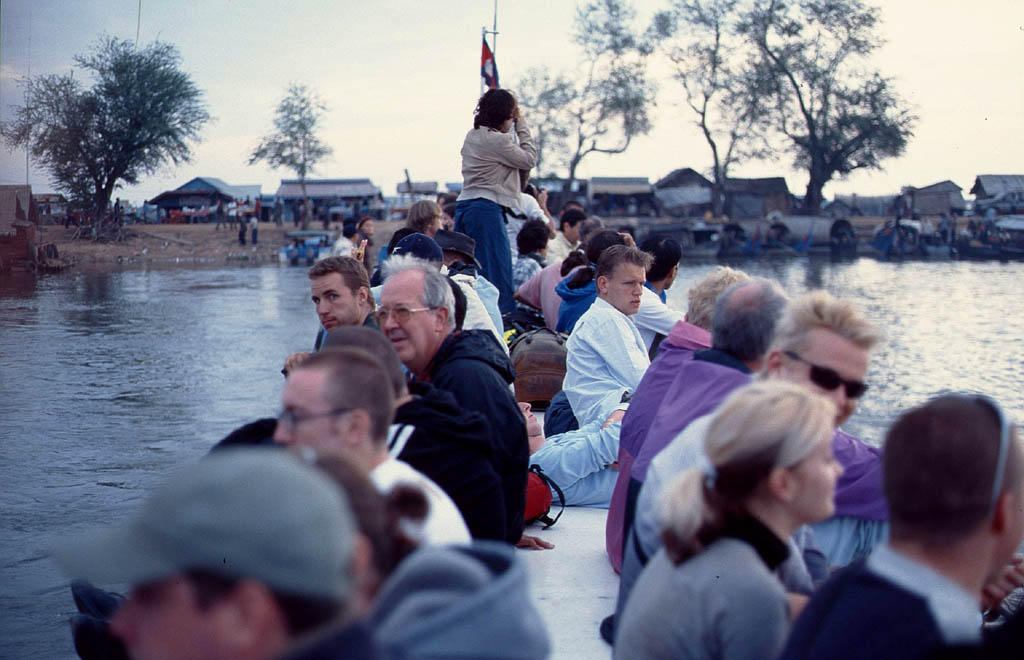
| Do not let yourself push over board
|
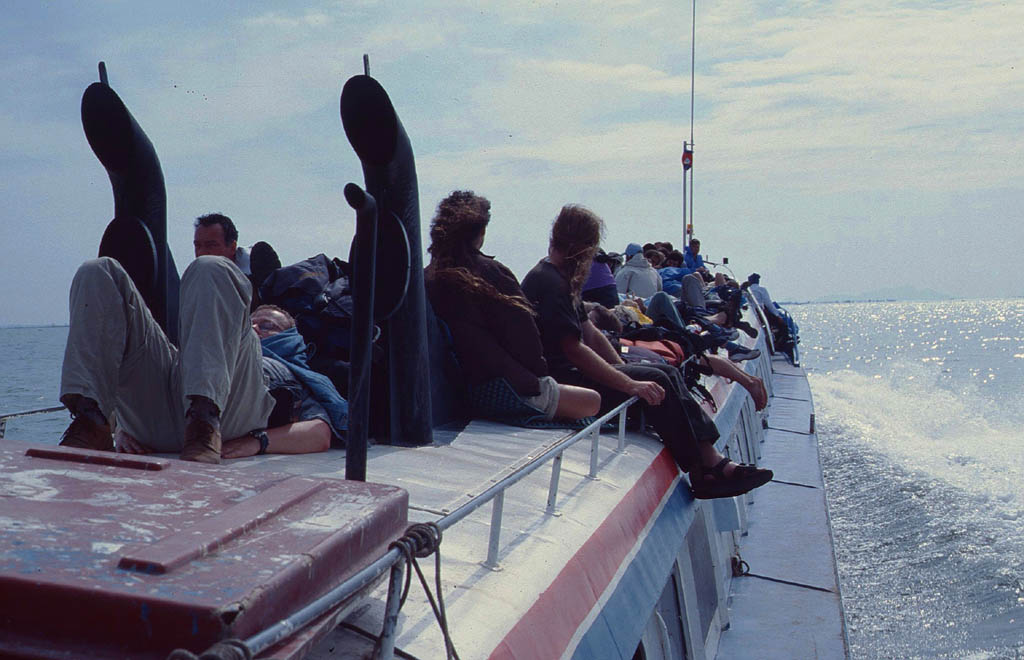
| One guy was lucky to find a spot to sleep
|
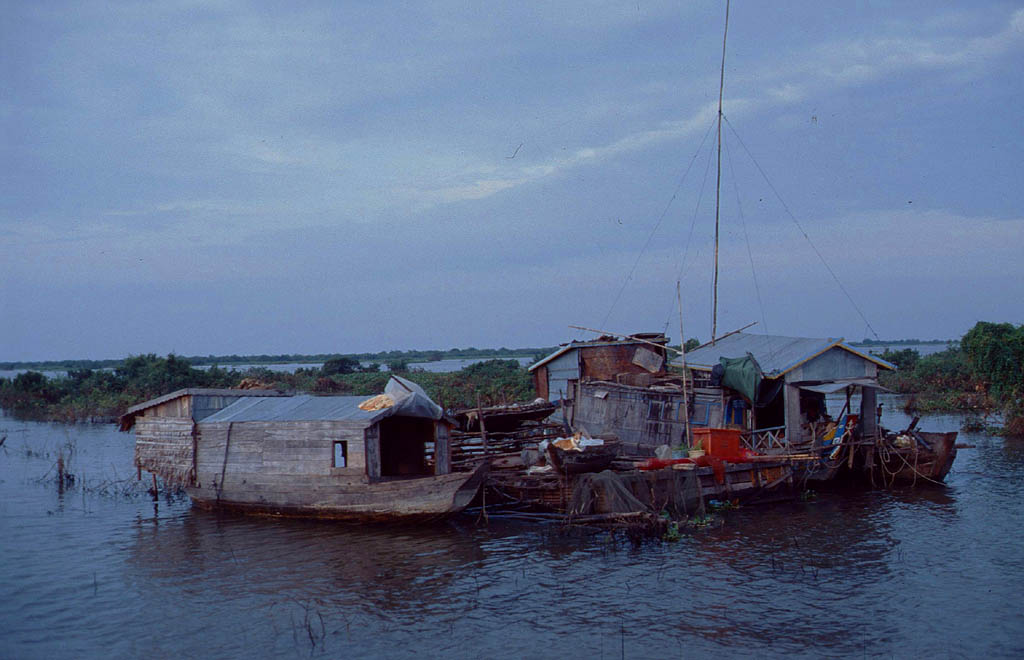
| One of the many house boats
|
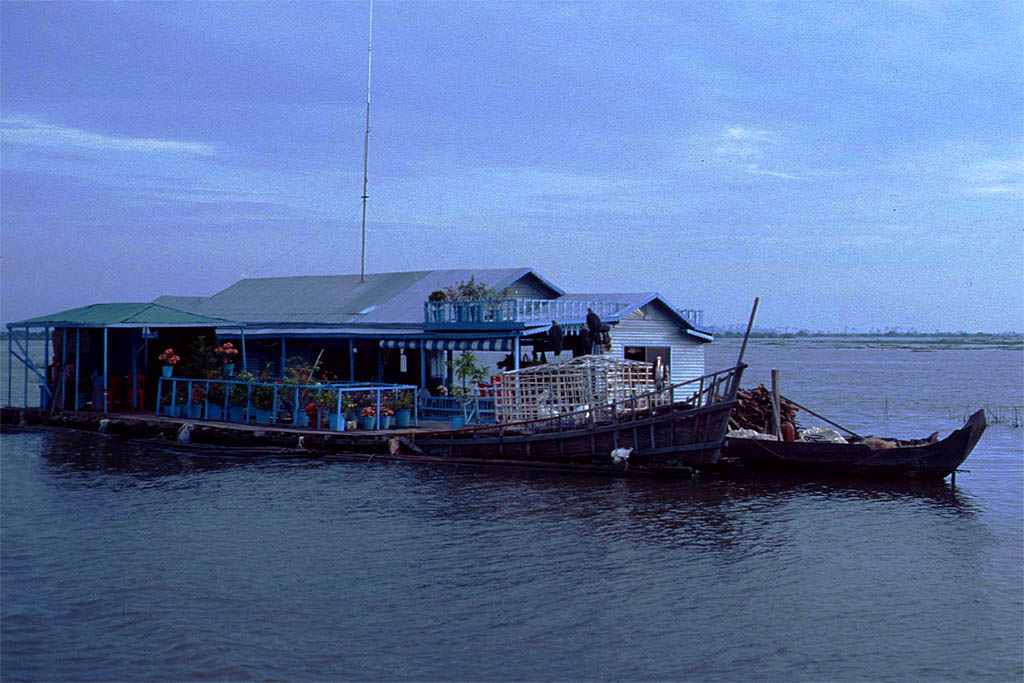
| For dwelling and for fishing
|
After around four and a half hours we arrived in Phnom Penh. A guy was already waiting for us at the pier. "Us" included another couple we met in the same guest house in Siem Reap. He must have recognized us from the description given by our previous host. The guesthouse he brought us to was pretty new. So new that the toilet didn't flush yet and must be fixed first.
As mentioned before, after Angkor was sacked in 1441 by the Thai, the Khmer moved to Phnom Penh and made it their capital. It became a wealthy city as a trading post between Indonesia and Laos and China because of the Mekong. So, it seems that the Khmer were not warlike and thus didn't attack their neighbors (even the Khmer Rouge and Pol Pot didn't fight other people but rather their own).
Probably greed made the Vietnamese in the middle of the 17th century to conquer part of Cambodia by cutting off Phnom Penh from its sea lanes, thus their trade business. And the Thai attacked again and burned Phnom Penh down in 1772. Cambodia did get only out between its rivaling neighbors with the French take-over in 1863. Again: The Europeans brought often peace when they colonized a country. For example, the British stopped the war between all the revaling Maharajas in India for centuries.
We only stayed a couple of days in Phnom Penh. The most important site we visited was the palace. And the best experience was a delicious one in one of the best restaurants with a view over the lake.
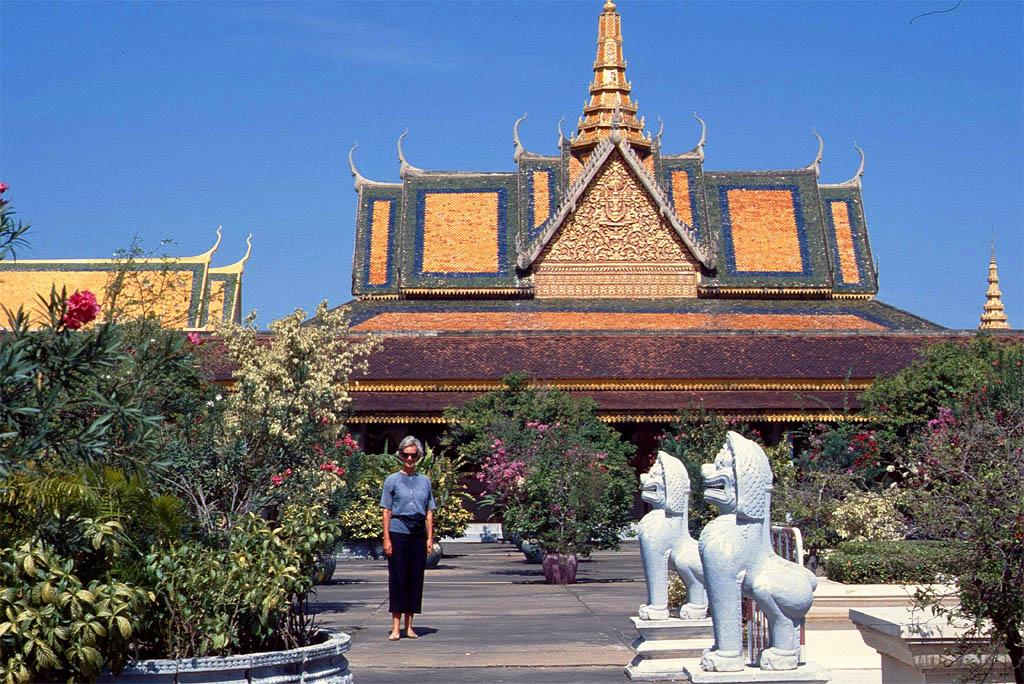
| Part of the Royal Palace
|
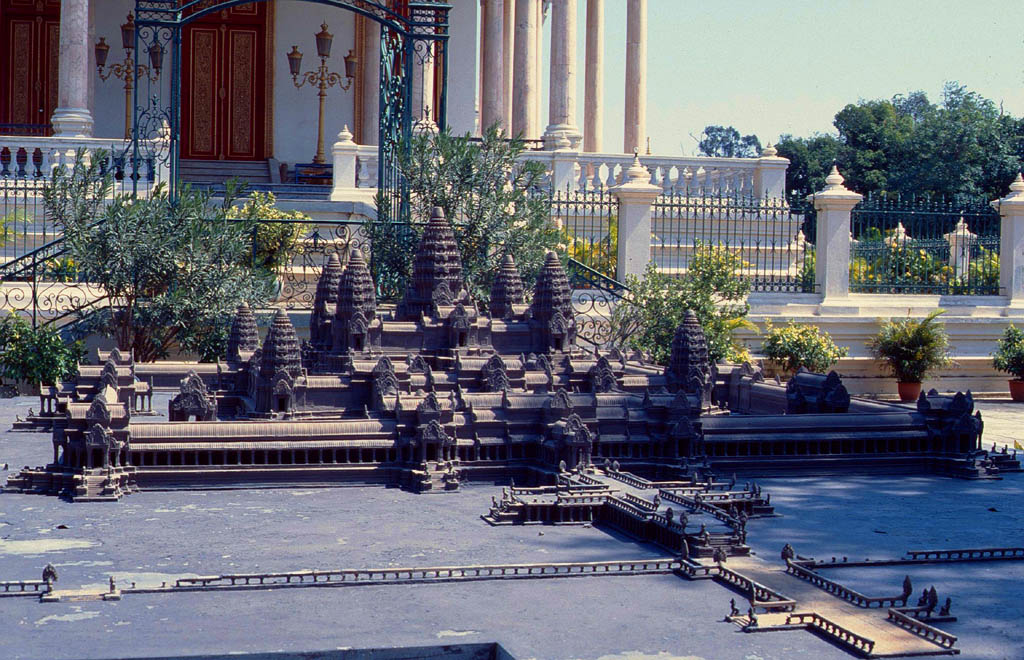
| A miniature of Angkor Wat
|
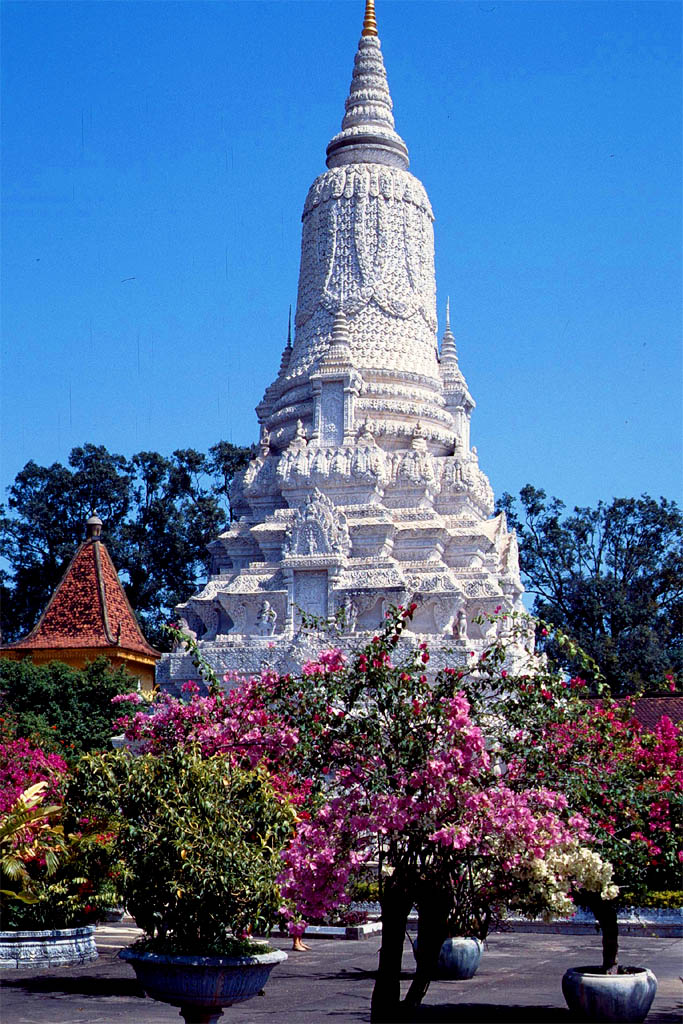
| Stupa in the Royal Palace Garden
|
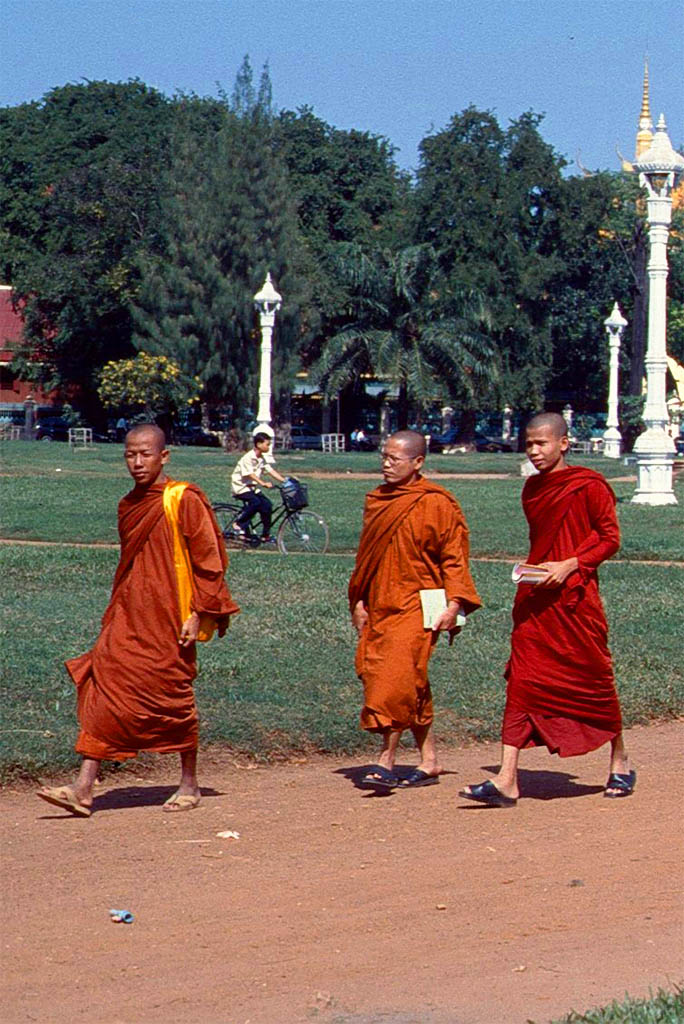
| Three walking monks
|
Our time was limited so we had to hit the road by bus in order to get to our next destination: Sihanoukville. This town was named after the last king of Cambodia. Read the story about him in the internet.
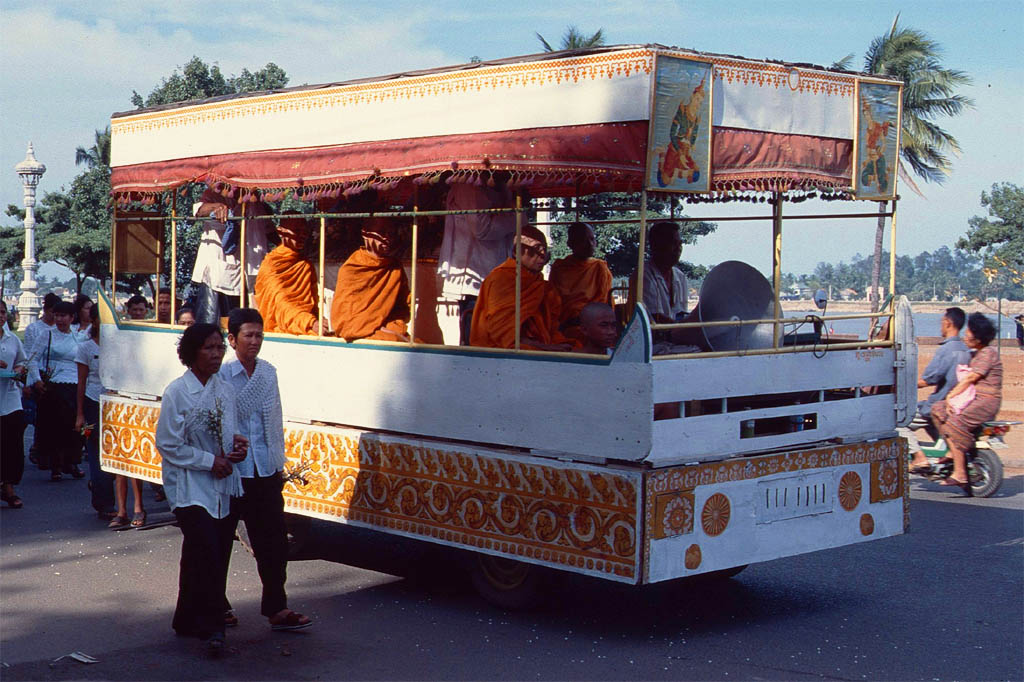
| We did not take the monk's bus
|

| to travel to Sihanoukville
|
Not many tourists were around but this town was getting ready for many more. Thus many guesthouse are being built. We found one of the first and it was a very good one. The price was very modest. The big breakfast we ate on the balcony was fantastic.
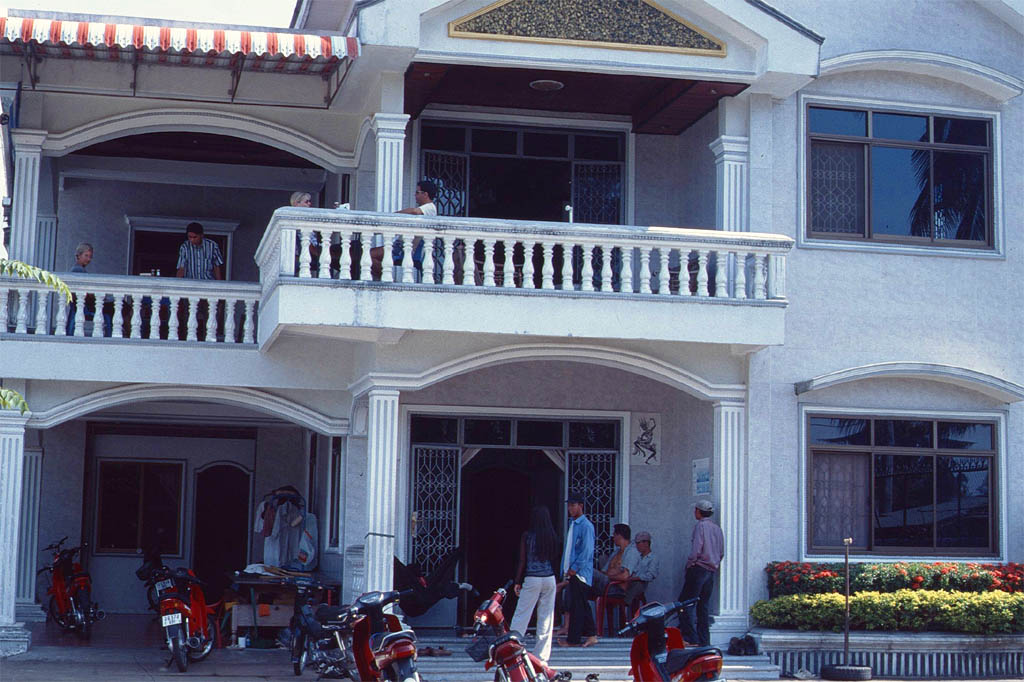
| We stayed in this new guesthouse
|
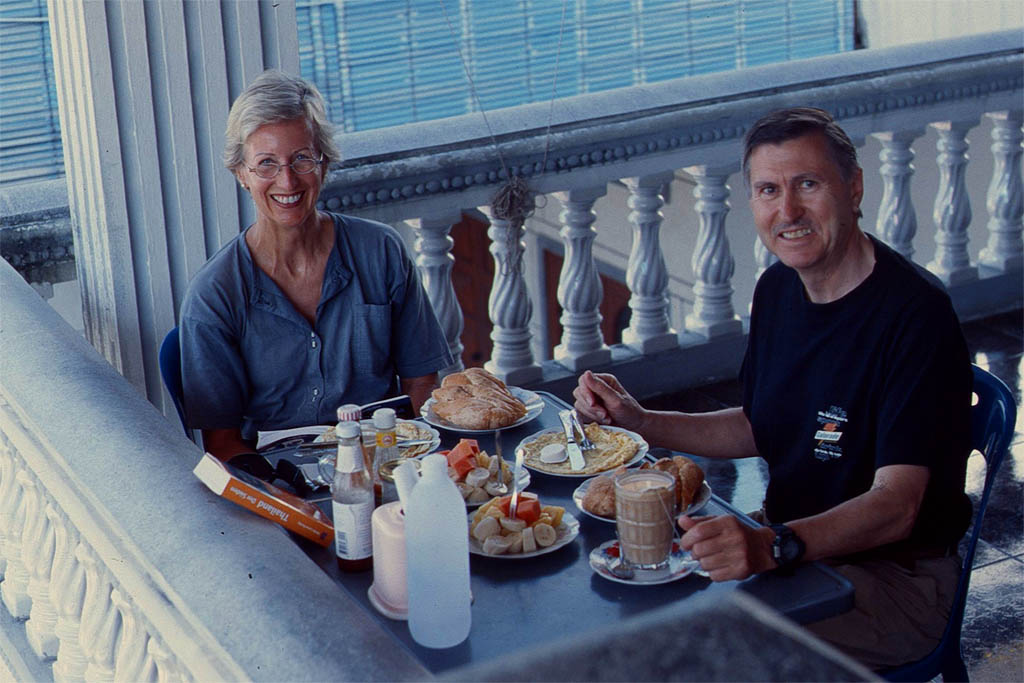
| Having a good breakfast on the balcony
|
But we are not here for the breakfast but the beach. It is a beautiful beach. Not at all crowded. But with people offering all amenities. That was really a treat, not necessarily with roasted crickets.
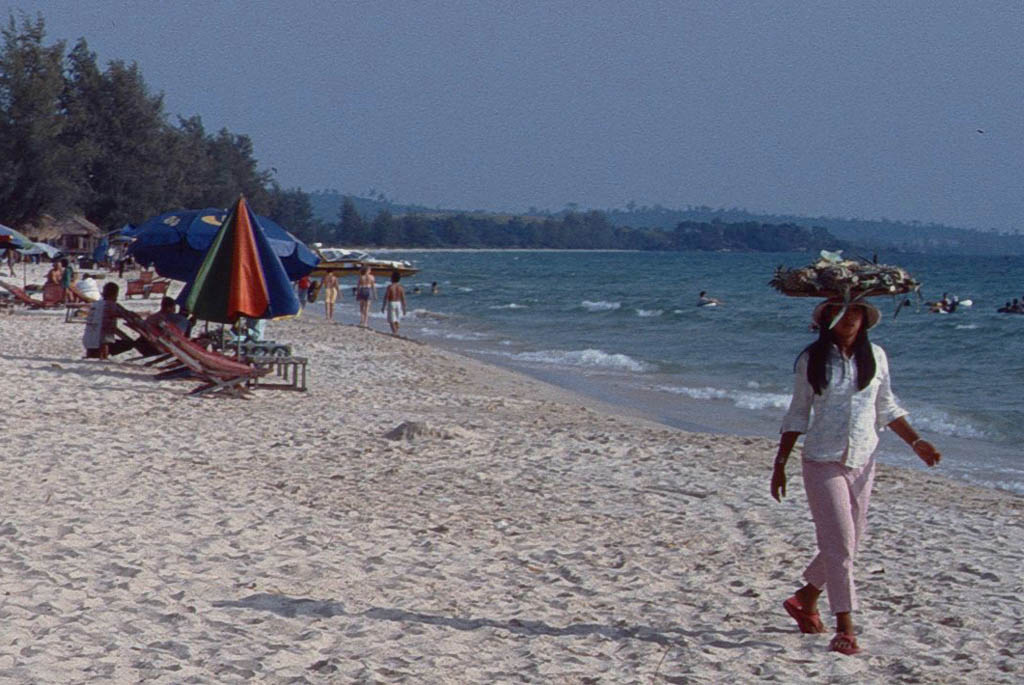
| What a nice beach
|
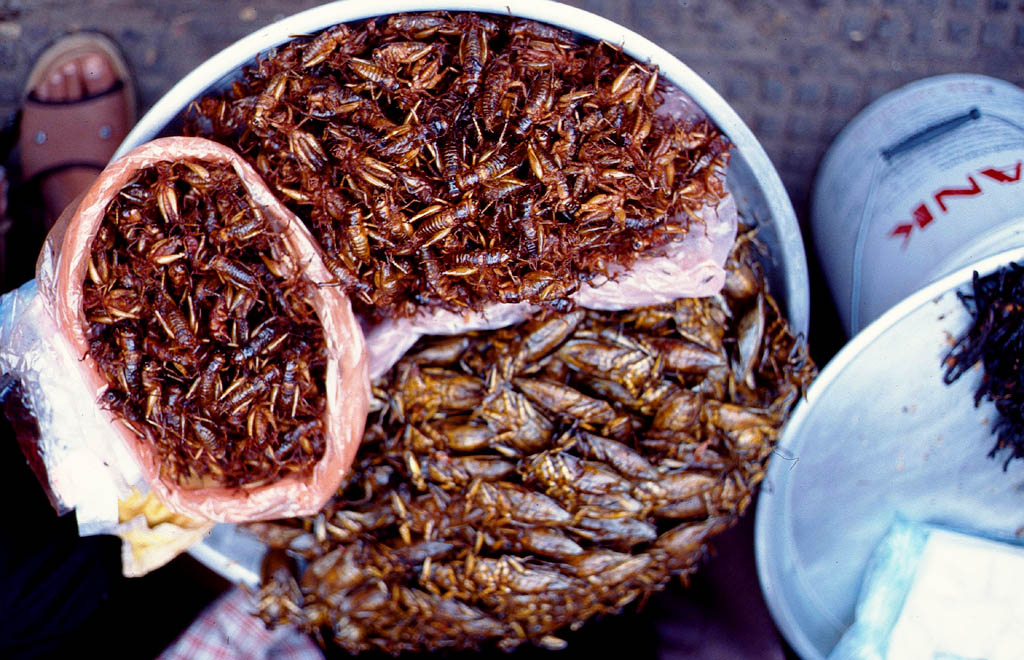
| Also being served delicious crickets
|
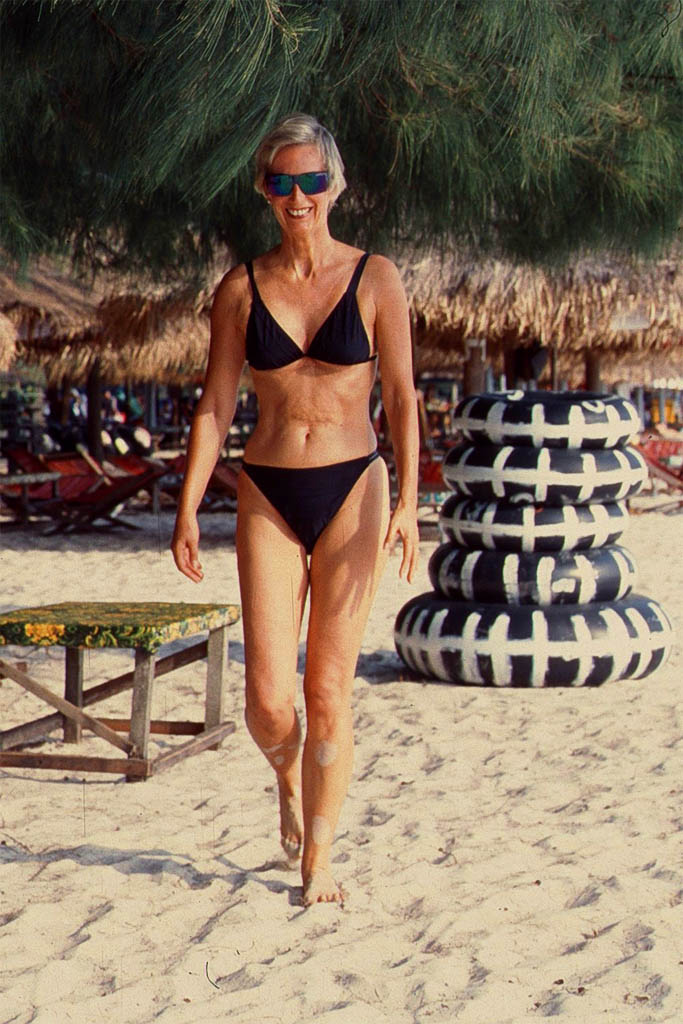
| Eating roasted crickets is a good diet
|
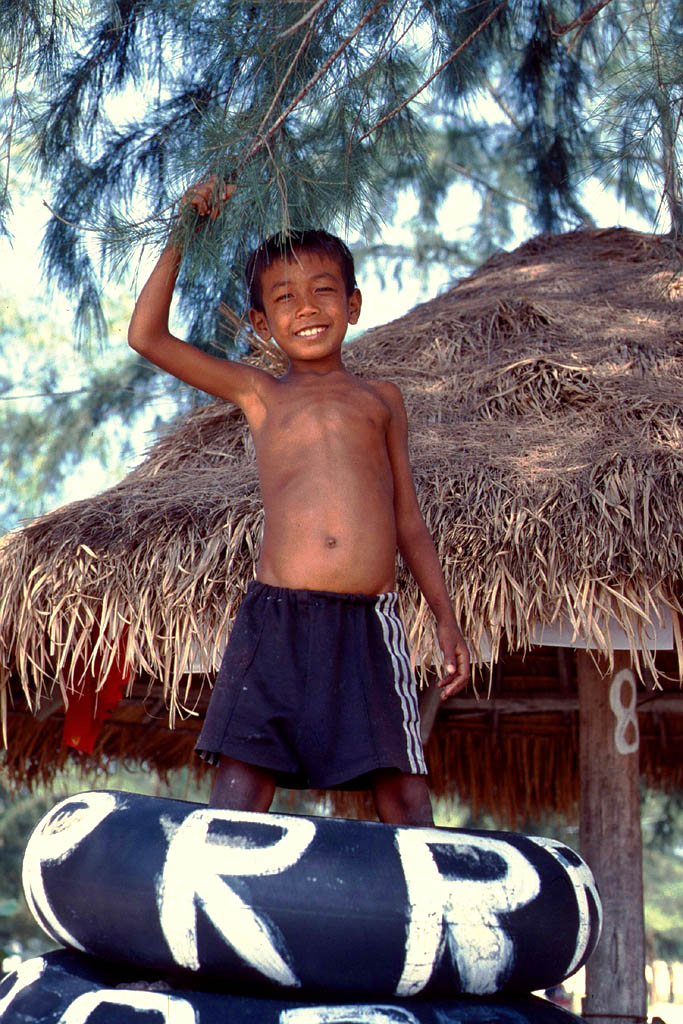
| Renting rubber tubes is good business
|
The last day was relaxing day on the beach. But I still was busy to read the last information how to leave Cambodia from here. Brigitte did not care much how to get out of here.
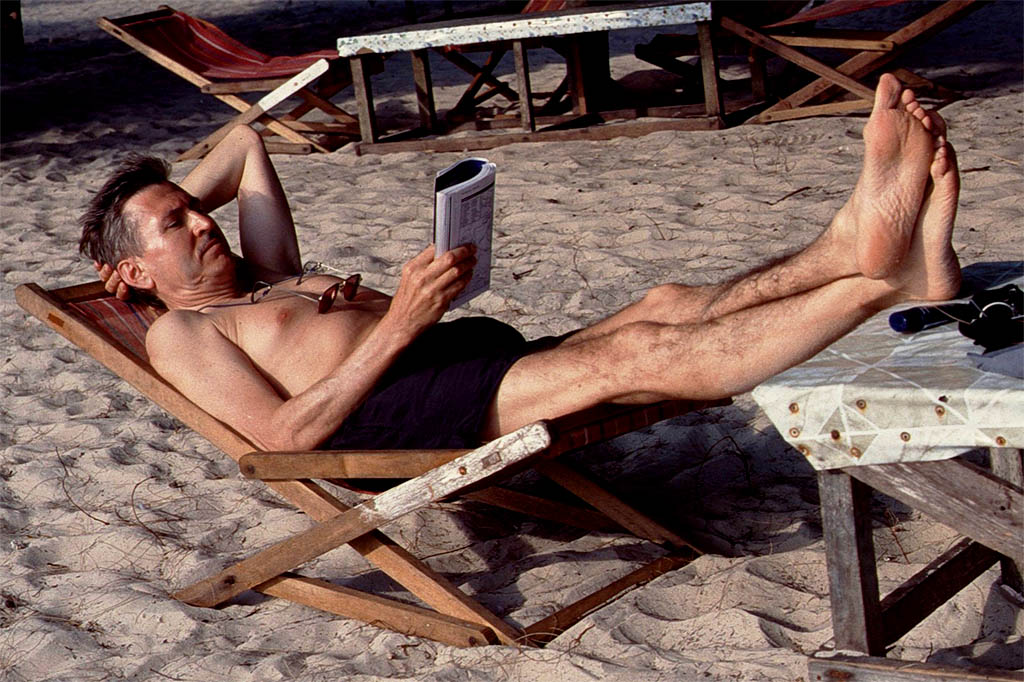
| I am reading the Lonely Planet guidebook
|
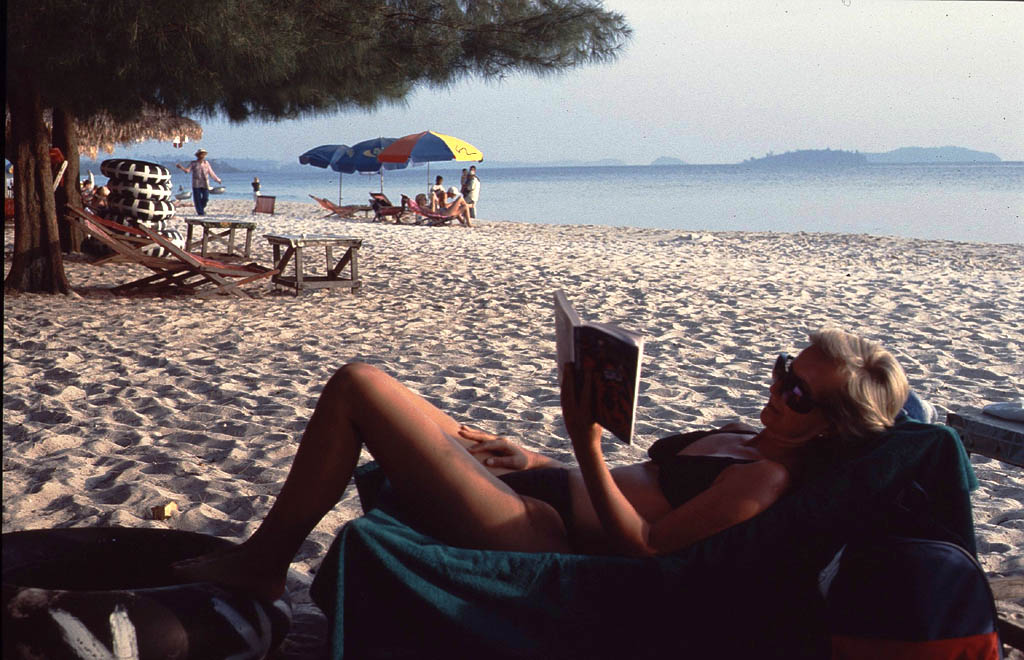
| Is she reading just a novel?
|

| Good bye Cambodia
|
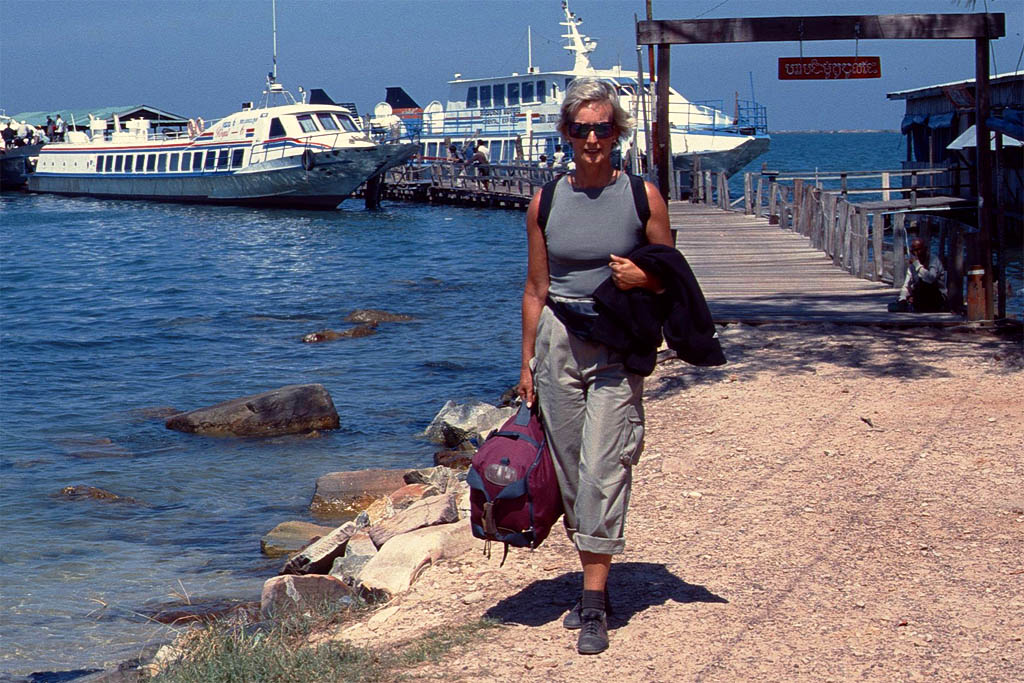
| On the way to Ko Chang in Thailand
|
Just some comments about Sihanukville today. I have seen a report on television about how the Chinese have more or less "conquered " this town as part of the silk road. The old inhabitants are suffering a lot instead of a better life with good paying jobs they are confronted with higher prices and the spoiling of the nature, especially the beach. Try to get information about that in the internet.
| 































































































